Summerset Scene



campaigner and Wellington nun Suzanne Aubert as New Zealand’s first saint. The path to sainthood is a four-step process, and it certainly is not a swift one!
Hello and welcome to the summer issue of Summerset Scene . I can hardly believe it will be Christmas in less than a fortnight, and then in three weeks we will be welcoming in 2023! What a busy year 2022 has been.
There is so much packed into this issue, but a common theme is milestones, and there have certainly been many of those this year. We joined in to celebrate the platinum jubilee of Queen Elizabeth II in June, and then the world mourned her death in September. Many of you wrote on our digital Remembrance Wall about what the Queen meant to you; we share some of these stories on page 15.
Our cover story this issue is about the involvement of Aotea resident Father Maurice Carmody in the long process of persuading the Vatican to recognise social justice
Here at Summerset we celebrate our 25th birthday this year; page 11 details our journey from our grassroots beginning in Whanganui back in 1997, to the numerous different villages you now call home. On page 24 our Staff Profile subject Brent Davis — who has has worked for Summerset for 20 years — describes life from the early days until now.
A quarter of a century sounds like a long time, and yet it appears to pass by in the blink of an eye! Marjorie Hall, our centenary star of Five Questions, reflects on what advice she would give her 25-year-old self, as does Summerset Ambassador Jude Dobson.

Speaking of years going by in a flash, we caught up with two couples from Summerset at Karaka who both had big milestones this year – the celebration of 65 years of marriage! Read their stories on page 13.
We also catch up with Taupō resident Peter Blackman, whose model railway has been with him across the oceans and the decades, and we meet Ron and Yvonne Laing from Summerset in the Bay, whose creative flair has set them on some very interesting journeys.
I hope you enjoy this issue, and that you have a wonderful festive season and fantastic summer. I will see you in the New Year!
 Ellie Clifford SUMMERSET SCENE EDITOR
Ellie Clifford SUMMERSET SCENE EDITOR
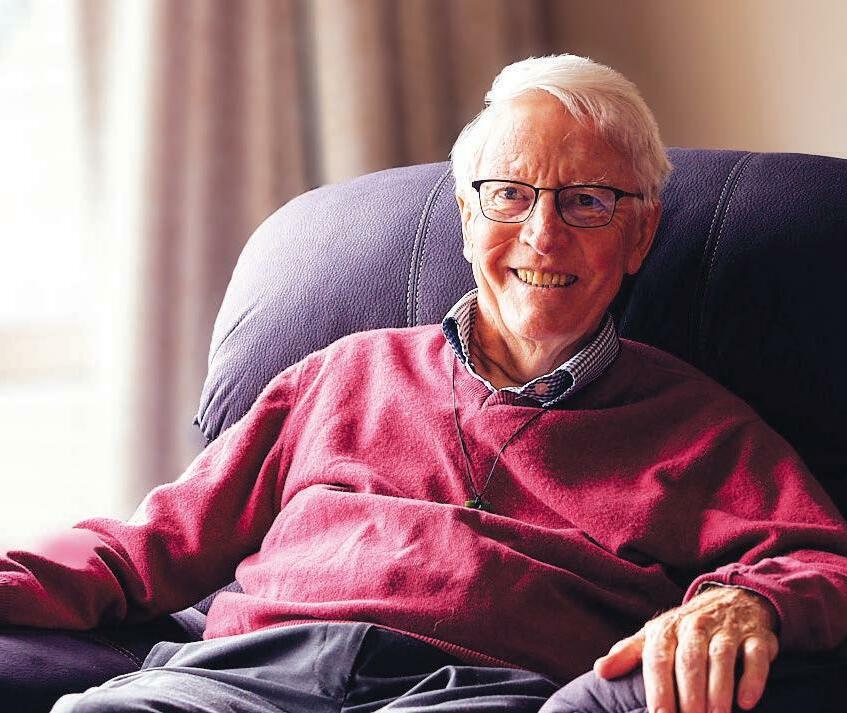


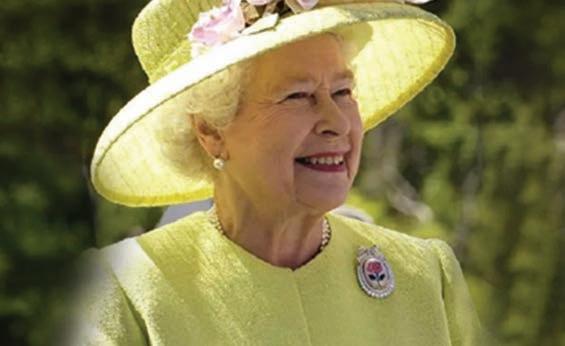
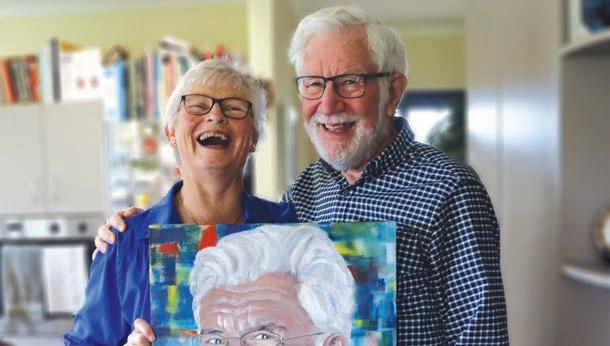

For most people, a project has a completion date within their lifetime, but for Father Maurice Carmody his project is built on one that others began nearly one hundred years ago. The Summerset at Aotea resident is helping the Wellington-based Sisters of Compassion convince the Vatican to recognise the social justice campaigner and their founder, Suzanne Aubert (also known as Sister Mary Joseph, Mother Aubert and Mother Mary Hohepa), as New Zealand’s first saint.
“Suzanne Aubert was a French missionary who came to New Zealand on a whaling boat in 1860. She was an intelligent and highly educated woman, who was ahead of her time in terms of the causes she championed,” says Father Maurice. “With a deep sense of social justice, Suzanne devoted her life and nursing skills to caring for the suffering and disadvantaged without discrimination.” Aubert was introduced to kaupapa Māori culture by her friend Peata Hoki. Together, they established a small class for young Māori girls using traditional insights. “She was fluent in te reo Māori and published one of the first and most influential te reo phrasebooks in 1885. Peata helped her to understand and appreciate traditional Māori medicine, knowledge she later used to create her own herbal remedies.”
From Auckland, Aubert moved to Hawke’s Bay, then up the Whanganui River and finally to Wellington, helping the less fortunate along the way. Inspired by her example, other women
Left: Father Maurice with his 1,800-page positio
joined her and together they became known as the Sisters of Compassion. “In Hiruhārama [Jerusalem] on the Whanganui River they responded to the challenges faced by single mothers caring for their babies and children. In Wellington, she founded a crèche, an orphanage and a hospice. She stood up for the dignity and privacy of women by refusing to give their names to the government,” says Father Maurice.
Eventually settling in Island Bay in Wellington, Aubert established a children’s home, a hospital and convent for the sisters, known as the Home of Compassion. She began a soup kitchen in the capital in 1901, which is still running to this day. Stranded in Rome during the First World War, she volunteered to nurse wounded soldiers, returning to New Zealand in 1920.
“When she died in 1926, it was the largest funeral ever recorded for a woman,” says Father Maurice. “The streets of Wellington were brought to a standstill. Just as she cared for people regardless of creed, people came from all creeds and walks of life to mourn her. She was a real embodiment of Christian values.
“After her death, the Sisters of Compassion were encouraged by Church authorities in Italy to seek sainthood for Suzanne. She was incredibly highly regarded there. The Sisters of Compassion began preparing the case for her canonisation in the 1930s, but it was not until 2004 that the current promotion began. In 2007 they invited me to join their team, and it has become an engrossing pleasure.”
Father Maurice grew up in Auckland, and after attending a summer camp as a child, he decided he wanted to become a Franciscan priest. “I was inspired by their youth team, as the camp I went to was run by such good sorts,” he says. “I went to Australia to train in 1963, and I studied in both Melbourne and Sydney. I was ordained as a priest in 1970.”
Father Maurice then spent 10 years in a youth ministry and university chaplaincy in Australia, during which time he earned his bachelor’s degree, majoring in education and history. Learning Italian as part of his bachelor’s proved a useful foundation for later studies towards his master’s degree in church history at the Gregorian University in Rome, and subsequently his doctorate. “I taught in Melbourne and Rome. Rome could be a crazy place. All in all, I spent about 20 years there. I enjoyed the food, and I made a lot of good international friends. I learned a lot about life and our common humanity.”
Alongside studying and teaching, Father Maurice found time to publish two books. One is a hefty tome on the history of the Franciscan order, while the other is an exhaustive account of the life and works of Suzanne Aubert. This is the positio , or collection of documents, used to present the case for her beatification.
“I didn’t want to lose touch with my roots, so I moved back to New Zealand and became the parish priest of the Sacred Heart Cathedral in Wellington. It was there that the Sisters of Compassion approached me in 2007.” With his
Suzanne Aubert was a French missionary who came to New Zealand on a whaling boat in 1860. She was an intelligent and highly educated woman, who was ahead of her time in terms of the causes she championed.

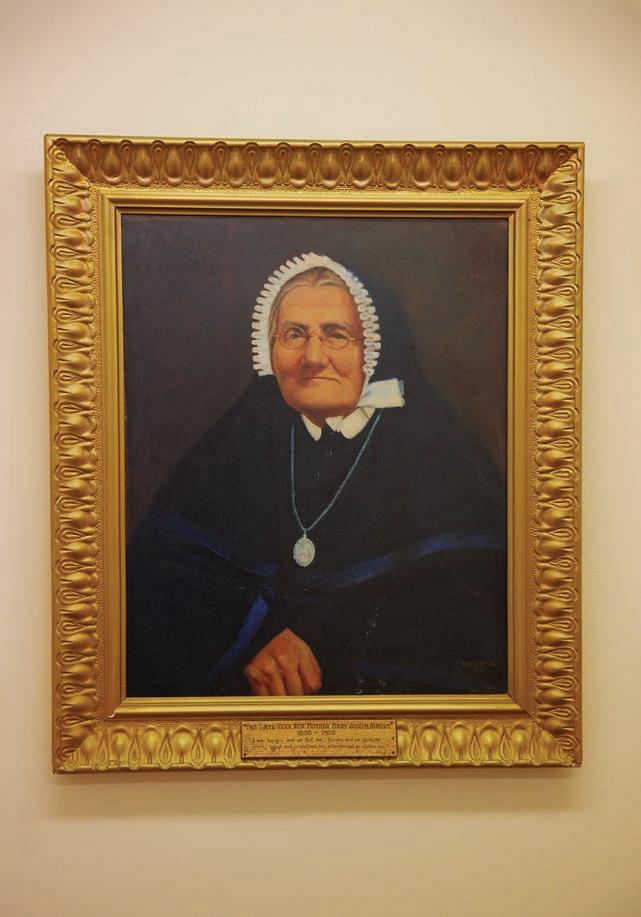

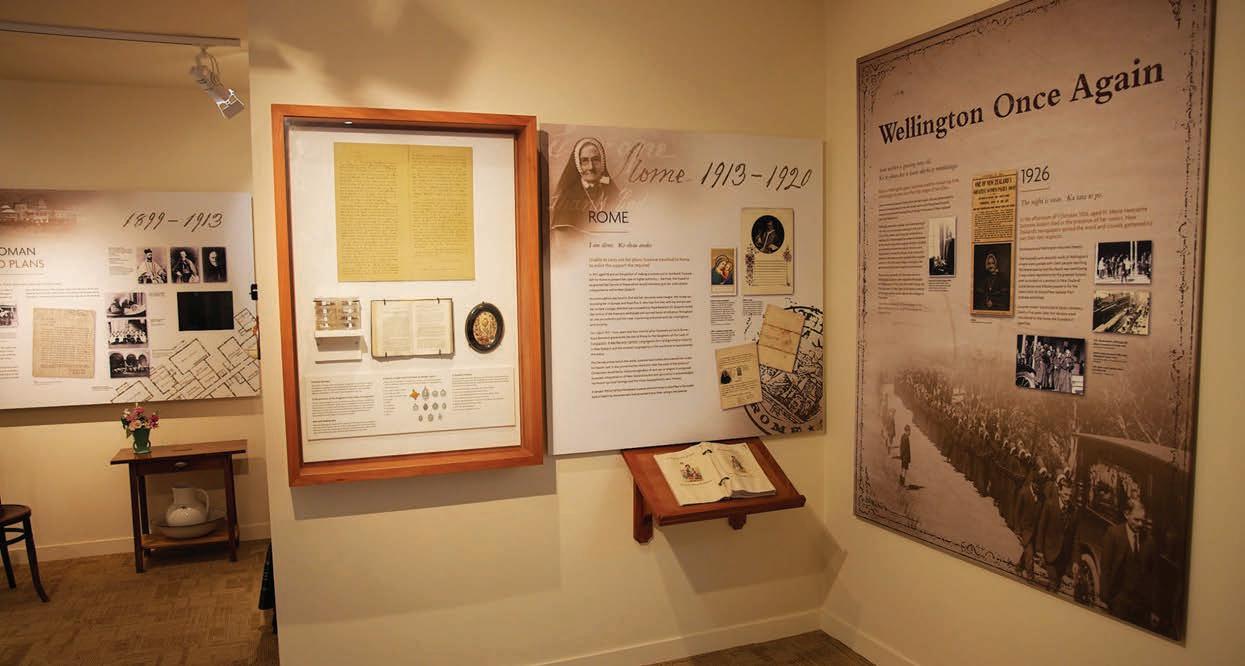
fluency in Italian and his connections to Rome, Father Maurice was the ideal choice as postulator, to work with the sisters in presenting the case for Aubert’s beatification.
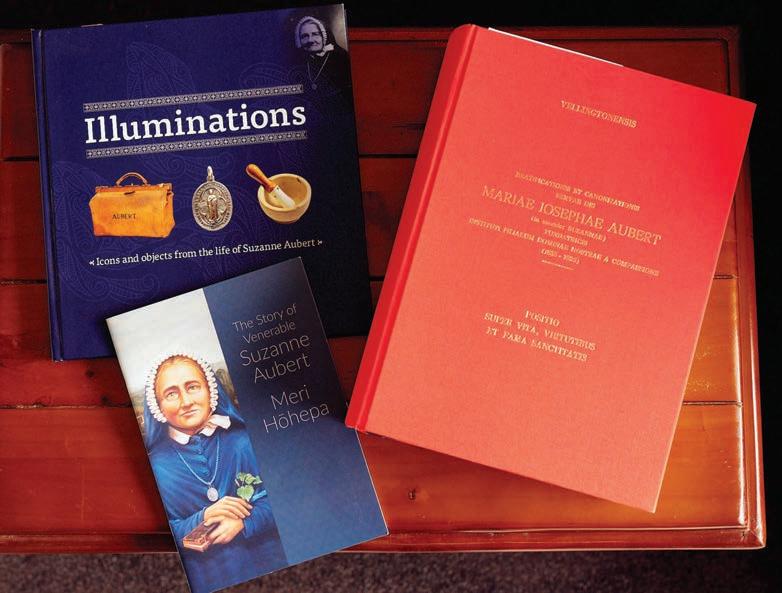
“I began by translating letters for the cause. Although only the Pope can decree someone is a saint, he does so only after all the evidence has been scrutinised by a Vatican department: the Congregation for the Causes of Saints.”
In the Catholic Church sainthood is achieved via a four-step process, and none of the steps are simple or quick. It takes a long time to make a saint – the average time between death and canonisation is 181 years. Initially, the person’s life is examined and a decision is made about whether they are considered worthy of further study. If they are, then they become known as a Servant of God. The second step is to become Venerable, and for this an all-encompassing document is prepared – the positio, which delves into the candidate’s life and values in minute detail. Father Maurice’s positio for Aubert is about 1,800 pages long. “At times, I wondered if I’d ever finish it, but despite the time it’s taken, I’ve enjoyed it,” he says, smiling.
Due to illness, Father Maurice retired from being a parish priest two years ago and moved to one of the two apartments the Catholic Church owns at Summerset at Aotea. “I started out in the care centre here, and I can’t speak highly enough of the care I received. Once my strength returned, I moved into an apartment with a very pleasant view over the bowling green and towards the bush-clad hills beyond. I enjoy cooking, and in addition to eating tasty meals from the Summerset kitchen, I often cook for myself.”
Besides his role of postulator for Suzanne Aubert, Father Maurice leads Sunday Mass at Aotea, and provides pastoral care and support for anyone in the village or beyond that asks him. He also enjoys spending time socially with his fellow residents. “I’ve met some wonderful people here,” he says. “I play Scrabble with friends. I read widely and enjoy cryptic crosswords. I exercise every day, making good use of the pool and walking in the grounds.”
And what of Suzanne Aubert’s path to sainthood? In 2016, after Father’ Maurice’s positio was presented and reviewed in Rome, the Pope declared her Venerable, the second
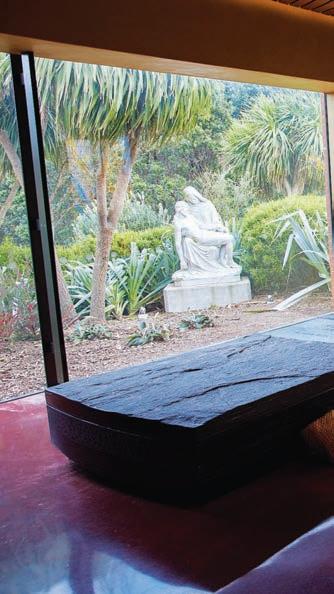
step on her journey. The third and fourth steps concern the official recognition of two miracles experienced by people of faith who have asked Aubert to be their patron. Father Maurice has compiled and presented evidence to Rome regarding the first professed miracle, which concerns the healing of a New Zealand woman. “Hopefully,” Father Maurice says, “Rome will eventually recognise this. However, whatever the outcome from the perspective of the Catholic Church, Suzanne Aubert was a remarkable woman. She was a champion of social justice and a pioneer nurse in New Zealand’s history. Her story deserves to be more widely shared.”
Opposite page: Information about Suzanne Aubert, and Father Maurice’s positio. Centre: Suzanne Aubert’s final resting place at the Sisters of Compassion in Island Bay, Wellington. Above: Father Maurice with a portrait of Suzanne Aubert.
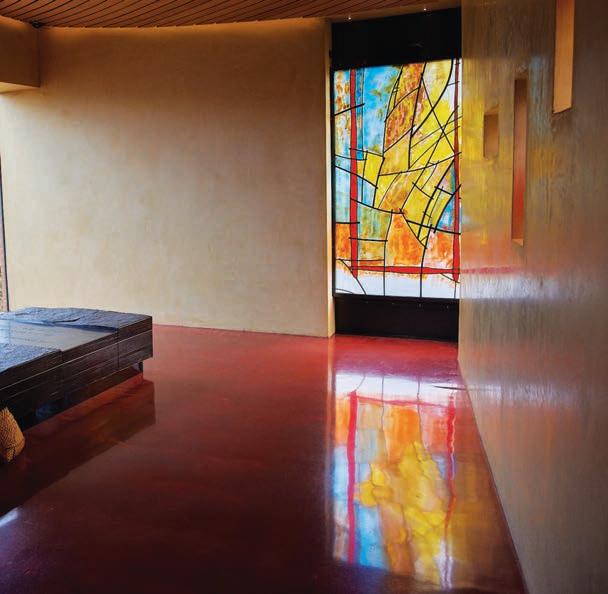



More than 70,000 people in Aotearoa New Zealand live with Alzheimer’s and dementia mate wareware. In September, Summerset became an official partner of Alzheimers New Zealand. This partnership will provide support for the organisation’s valuable work, including its information and advice service for individuals and whānau, advocacy, support for frontline services and Dementia Friends.
All Summerset staff undertake dementia awareness training, and we are committed to championing and supporting Alzheimers New Zealand and Dementia New Zealand. We were among the first aged residential care providers accredited under Alzheimers New Zealand’s Dementia Friendly Recognition Programme. We are proud to say that every one of our 33 Summerset villages has been reaccredited as dementiafriendly by Alzheimers New Zealand. Since Summerset was accredited in 2020, we have opened eight new villages, including three industry-leading memory care centres. Over the course of Alzheimer’s Awareness Month in September, generous Summerset residents raised an incredible amount for dementia awareness organisations.
To view the online webinar ‘Communicating with and supporting someone living with dementia’, please visit summerset.co.nz/ dementia-webinar

We are thrilled to announce that we have recently partnered with Hato Hone St John to support its Therapy Pets programme. The benefits of four-legged friends have long been recognised by healthcare professionals, and they have been credited with helping mental stress and anxiety, and even relieving the physical symptoms of pain. The Therapy Pets programme enables volunteers and their animals to provide companionship to those in rest homes, private and public hospitals, rehabilitation units and assisted-living homes. We know our Summerset residents love animals, and we are thrilled that this valuable service will be visiting our villages!

Mental health is important to us at Summerset. Like many carers and frontliners, the staff at Hato Hone St John have had it tough over the past few years. That’s why we are pleased to be able to donate to their Good As Green staff appreciation programme, so this service can continue to recognise and celebrate the valuable work they do.
Curious about how you can help? Along with providing frontline ambulance services and first-aid courses, Hato Hone St John also offers many programmes for the community, including Caring Caller (a friendly ear for those who feel isolated), the Therapy Pets programme for adults and children, and a range of youth programmes. If you are interested in volunteering, visit join.stjohn.org.nz/volunteer-jobs

A quarter of a century ago, the doors to the first Summerset village opened, born from a desire to create a home good enough for founder John O’Sullivan’s beloved nana.
Now, 25 years on, we have grown from our grassroots beginning in Whanganui to a publicly listed trans-Tasman company, with 33 villages across New Zealand and Australia, and 17 more in the pipeline. Our guiding principle is still the conviction that our villages must give our residents the opportunity to enjoy the ‘best of life’ in a place we’d be proud for our family to call home.
When she was in her 90s, John’s grandmother became unwell and moved from her home into a publicly funded geriatric ward. John was disgusted at the lack of space and privacy on offer, and felt it was an affront to her dignity. “My nana was in what was basically a dormitory with only a plastic curtain between beds,” John remembers. “The room she had was so pokey you could stretch out your arms and touch all four walls. And all facilities were shared –nothing was hers; nothing was private. When I investigated the market, I found aged care was all like that.”

Care for the elderly had always been the preserve of the state, but in the late 1990s the government was looking to move out of it. John, along with his wife Rose, called upon their combined background in hotel management, property development and

Above: The lady who inspired Summerset.
geriatric nursing, and in 1997 bought the site of the former East Wanganui Tennis Club. Their original goal was to provide a higher calibre of rest home care, but John decided to build a few units on the excess land. These units proved extremely popular with seniors who wanted to keep their independence but liked the reassurance that help would be at hand if needed, thus creating a retirement lifestyle that offered a continuum of care.
Summerset’s Operations Business Manager Sonia Pratt was working in Whanganui at the time. “The idea of a retirement village was so new to Whanganui. It added another dimension of life for older people. I remember it being very flash, and lots of people wanted to go and have a look. There was a lot of talk about the villas being high-end and the gardens being well looked after. The new village was about inclusion and community, and that was all very new at the time.”
With the ethos of community and quality front of mind, John and Rose brought on their accountant Norah Barlow to help grow Summerset. It was a vital partnership: John had the vision and the nerve to buy the land, while
Our staff believe in our ethos and our mission, which is to bring the best of life to our residents.
Norah managed the finances and ensured ideas became reality. Norah became Summerset’s first CEO and was a driving force in turning it from a small family-run business to an NZX-listed company with a staff of more than 2,000 and multiple offices across the country. “Listing Summerset meant that we could build with equity, rather than debt from the bank. We made it clear to shareholders that rather than paying big dividends, we would be putting the profits back into our villages.”
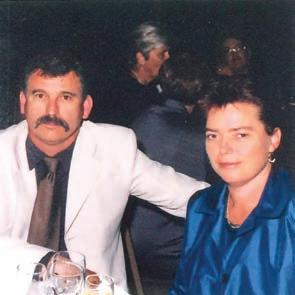
This principle of reinvestment has continued, allowing Summerset to continue to explore how to do things better, for our residents, our staff and the environment. A house is made a home through personal touches, so residents can customise their villas and gardens and bring their pets along too. To foster community spirit, villages hold weekly Happy Hour drinks, usually in the village centre, although during Covid-19 village golf carts were repurposed as mobile bars that visited the residents! Every village has an Activity Coordinator who plans outings and adventures to the local areas and beyond. Covid-19 gave us an opportunity to bring some activities online – our monthly Big Quiz, Cooking with a MasterChef and An Interview With… are just some of the activities residents across the country can access at the same time.
We know security and peace of mind are paramount. Five years ago, we introduced the first of our industry-leading memory care centres, which offer apartment-style living

designed specifically for residents with dementia. We are an accredited dementiafriendly organisation and all staff undertake dementia training. We have also invested in Kaitiaki – Wellbeing Assistants – to provide our most vulnerable residents with quality time and activities.
Sustainability and environmental care are not merely buzzwords to us. We know that building new communities can be resource-intensive, which is why we have introduced recent initiatives such as installing solar panels at Summerset in the Sun and redesigning our village centres with sustainability and future-proofing top of mind. Summerset is also the only retirement village operator in New Zealand to be a signatory to the Climate Leaders Coalition, which has the goal of mitigating the effect of businesses on the environment.

Finally, we think the secret of Summerset’s success across 25 years is the people who work here. All our permanent staff receive shares in the company, and we pride ourselves on paying competitive salaries for our nurses and care workers. But it’s more than just about the perks. Our staff believe in our ethos and our mission, which is to bring the best of life to our residents. We must be doing something right – Sales Manager Brent Davis (featured in this issue’s Staff Profile) has been here for more than 20 years, and several former staff members have chosen to move to our villages upon their retirement!

We aren’t the only ones celebrating a special occasion this issue. Two couples, both from Summerset at Karaka, are celebrating an outstanding milestone – 65 years of marriage!

Visit the Williams’ villa and you’ll see from the wall pictures and the miniatures in the cabinet that it’s cars – specifically Chevrolets – that keep this couple close. The couple, who have lived at Summerset at Karaka for more than three years, are members of the Vintage Car Club of New Zealand and have taken part in innumerable international rallies. Alf drives, and Rosemeri navigates.
Any tips for a happy marriage? “Don’t argue with your wife,” says Alf seriously. “If you’re cross, go out and take a drive or a walk. Then come home and talk.” “We support one another,” says Rosemeri. “We share similar values.”
They celebrated their anniversary on 5 October. “One of our daughters put on a dinner for us, with family and close friends. It was wonderful. We also got a card from the [then] Mayor of Auckland, one from the Prime Minister’s office, and one arrived early from the Queen!”

It was a local dance that brought Beverley and Trevor Kirk together in 1954. “The YMCA in Palmerston North used to have a dance for young people every fortnight,” says Beverley. “That’s where we met.”
The couple started a family and moved around the country for Trevor’s work. Including their serviced apartment at Karaka, where they have lived since June, the couple can count 22 homes together. The couple both enjoy music, and Trevor played piano at functions for more than 40 years.
“There are several pianos in the village, so I still enjoy the opportunity to play,” Trevor says. The couple also find joy in their large extended family, as well as friends and their faith.
“We have a plaque on the wall that says, ‘Happiness is being married to your best friend’,” says Beverley.


“She is my best friend,” agrees Trevor. “You have got to be able to talk, through the good times and the bad. There is a saying: ‘Never let the sun go down on your wrath’.
Someone must have the grace to say sorry.” The pair celebrated their special day with fellow residents. “We had a wonderful afternoon tea and were given two wedding cakes!” says Beverly. “All the ladies dressed up and the men wore collars and ties and trousers. It was such a lovely surprise!”
This is the perfect spot for a relaxed coastal retirement lifestyle. The first delivery of homes will be ready in late 2023, with pre-sales starting in March 2023.
Perfectly positioned next to Boulcott’s Farm Heritage Golf Course, the first delivery of homes at this Lower Hutt village are scheduled to be ready in mid-2023 and pre-sales are already underway.


Summerset Milldale offers easy access to everything on the Hibiscus Coast that a busy retirement life demands. The first delivery of homes will be ready in early 2024, with pre-sales starting in early 2023.

On the edge of Auckland’s Eastern Bays, Summerset St Johns is the address for a luxurious retirement experience. The first delivery of homes will be ready in mid2024, with pre-sales starting in early 2023.

Boulcott, Wellington
Waikanae, Wellington
Milldale, Auckland
St Johns, Auckland Blenheim
Parnell, Auckland Masterton, Wellington
Rangiora, Canterbury
Half Moon Bay, Auckland Kelvin Grove, Palmerston North Rotorua, Bay of Plenty
Construction is well underway for four of our future villages in both the Auckland and Greater Wellington regions.
The weather is getting warmer and the flowers are in bloom. Like the displays of cherry blossoms in Japan, Aston Norwood’s annual spring celebration, Blossom Valley, drew thousands of visitors from around the region. This floral wonderland is 40 minutes’ drive from the Wellington CBD, and Summerset was delighted to be a named partner for the 2022 festival. We were thrilled to see some of our Summerset at Aotea residents visiting the festival.
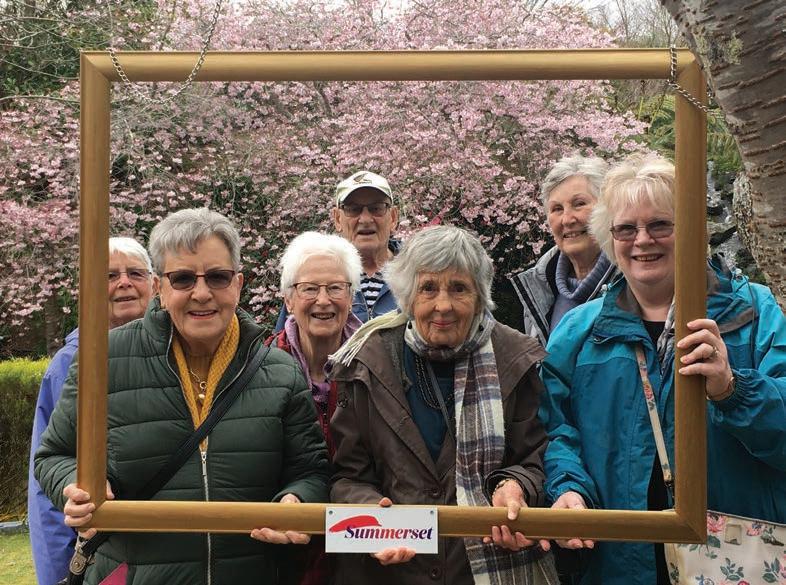
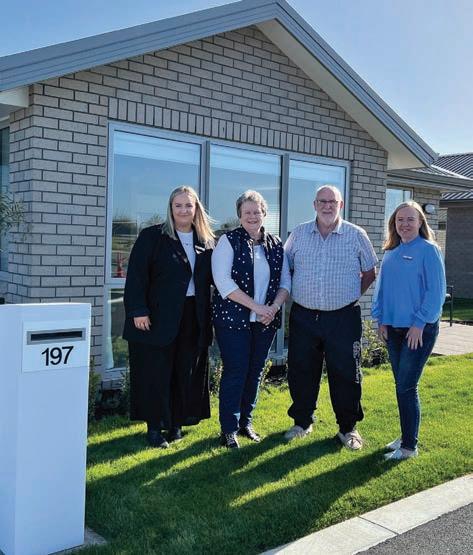
We are excited to welcome the first residents into their new homes at Summerset Prebbleton! More than 25 residents aged between 70 and 90 years young have moved into their villas since October. Located a mere 500m from local shops and amenities and the newly opened Prebbleton Village retail hub, Summerset Prebbleton will offer more than 290 independent-living homes, including a mix of villas, cottages and serviced apartments. There will also be a care centre providing a range of care options, plus our industryleading memory care centre. Very soon, our newest residents will be able to enjoy a pool table, dartboard, kitchen and puzzle corner in the temporary recreation centre, as well as a library. Welcome to the Summerset family – we hope you will be very happy in your new homes!
We are delighted that Summerset in the Orchard and Summerset at Wigram were finalists for the 2022 People’s Choice Award category in the Aged Advisor New Zealand Best Retirement Villages and Aged Care Facilities Awards. Located in sunny Hawke’s Bay, our Hastings village was lauded for many aspects, including its staff, level of care and lifestyle. Staff were hailed for their approachability and their exemplary care of residents, while the tight-knit and friendly village community was also praised. Summerset at Wigram was described as “living in paradise” and “it’s a wonderful life”, with the variety of activities and the warmth of staff and other residents lauded. Well done everyone!
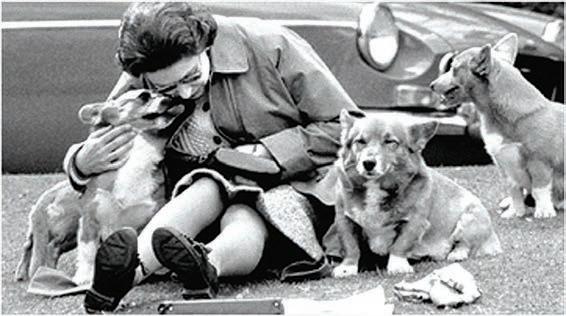
We had many lovely memories and comments shared on our virtual tribute wall for HRH Queen Elizabeth II. Here is a selection.
My husband, who was a district commander in the police force in Otago, saw Queen Elizabeth II several times while she was in this district. On the day before she left Otago, she called my husband, Kevin, and thanked him for the care she had received and presented him with this signed photo of her and Philip.

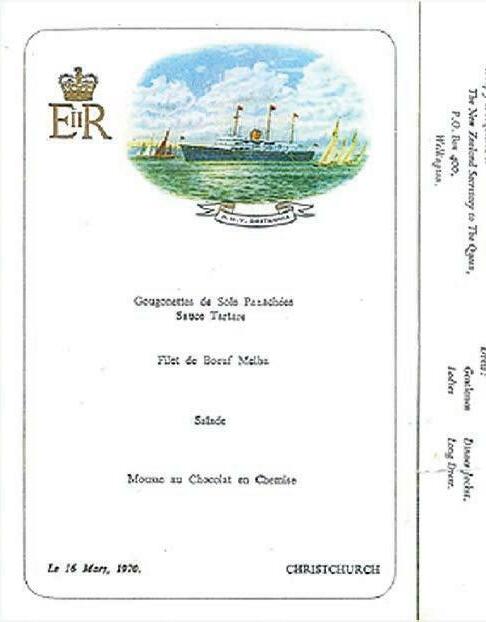
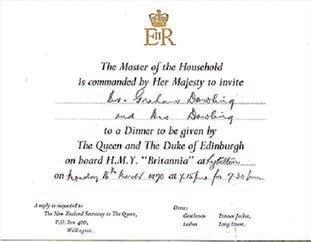
— M aggie Ford Summerset in the Bay
The end of an era for someone who has been a part of life. So important was she to us as children, my doll was named after her. She was a woman ahead of her time, and her commitment to service, duty and family has been amazing. As a small child I was in the crowd in Gore who waved as she went by – I was three!
— Gr aham and Leila Dowling Summerset at Avonhead
A special memory of having dinner with Her Majesty and the Duke of Edinburgh on board HMY Britannia
When Queen Elizabeth II was born on 21 April 1926, King George V and Queen Mary were the reigning monarchs. My sister was born on 6 May 1926 and I was born on 29 February 1928. I remember seeing photos of them in the papers. When George V died, Edward VIII became king. He was never crowned, as he abdicated so as to marry divorcee Wallis Simpson. I remember that happening.

George VI then became king. He had married Elizabeth Bowes-Lyon and they already had Princess Elizabeth and Princess Margaret. I have vivid memories of those children. It was lovely to see them often at movies and in the paper as they were growing up. Princess Elizabeth was very busy in the later part of the Second World War. She looked great in uniform.
Princess Elizabeth married Prince Philip on 20 November 1947 and I watched their wedding at the movies.
At the Garden Party I was surprised how petite she was – just a couple of inches over 5ft (1.24m) – but that was of little consequence because her beauty just blew everything else out of the water. In January 1954 she was a few weeks away from her 28th birthday, and to me was the most attractive woman I had ever seen. In an age when physical beauty is judged by comparison with movie actresses, there was no contest – Elizabeth Windsor-Mountbatten was the outright winner. However, it was her concern for ordinary people that shone out on the day I was on guard duty.
The Queen was to open Parliament in the afternoon and hold an investiture in the Town Hall at night. Timing was important, and the guard was turned out to acknowledge her departure. But where was the Queen? Eventually, the Rolls-Royce appeared and made its stately way to Parliament. In a short time the crowd dispersed, and apart from the sentries we relaxed out of sight in the guardhouse, before an off-duty aide to
Prince Charles was born on 14 November 1948, and on that same day in 1949, when Charles turned one, my eldest daughter was born. She always felt a bit special being born on that day.
When George VI died on 6 February 1952, Elizabeth became Queen Elizabeth II. She and Philip were on holiday in Africa at that time. In 1953, when Elizabeth and Philip visited New Zealand, we had three daughters. With the help of friends, we went to Claudelands Showgrounds near where we lived in Hamilton to see the couple. Our youngest was in a pram and we had to climb a wooden fence to get to where we could see them. That was quite an adventure.
My interest in royalty has continued over the years, and now that Prince Charles is King Charles III, that makes five monarchs in my lifetime.
— Olwyn McDonagh Summerset Richmond Rangesthe Governor-General came in for a chat that revealed why the Queen’s departure had been delayed.
Apparently, Lady Norrie told the Queen that the staff had expressed the hope that they might be allowed to see the Queen in her coronation gown. The answer was “Of course”. The staff assembled by the stairs, and the Queen appeared and like a debutante showed off her gown, emphasising the hand-embroidered flowers symbolising the Commonwealth. Time was not a problem.
We had further evidence of this concern for others later in the evening. Standing orders stated that the guard was not to turn out after 6pm. We agreed instead to line the guardhouse balcony and were rewarded with a smile and a wave. A great way to end a long, demanding day.
— John Francis Summerset on SummerhillPaintings by Yvonne adorn the walls, while stone dwellings made by Ron are dotted around the garden.
Ron, a carpenter by trade, has always been an artistic sort. “When we were newly married, and our children were young, I made decorative wishing wells in the evenings. With Yvonne’s pot plants in them, I went to local motels and hotels to see if they’d be interested in buying one for their reception area. They were popular and sold for $10 each, plus the plant for $5. I sold about 150 and we used the money to reduce the mortgage.”
Ron also used his carpentry skills to build five motorhomes, using a truck first and then buses. They received many admiring comments. “I really enjoyed doing the fitting out. We still love exploring New Zealand. Having motorhome parking here is one of the reasons this village appealed to us.”
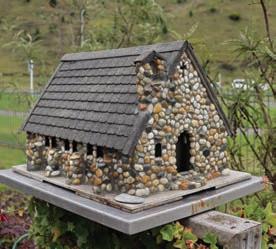
Ron hails from Whanganui and Yvonne from Christchurch. They met when they attended the same church camp when Ron was 22 and Yvonne was 17. “Our faith has been a great motivator for both of us. It has influenced a lot of our life decisions,” Yvonne says.
Above: Ron’s version of the Church of the Good Shepherd.
In 1964 Ron volunteered to teach and assist the locals to build their own 50-bed hospital and school buildings on a remote Vanuatu island. “In those days there were no government agencies involved. Missionaries staffed the hospital and schools. I oversaw the building projects – there was no one else! Water tanks, concrete blocks and drainage pipes were all made by hand using sand and coral from the volcanic coastline. It took Kiwi ingenuity to use the materials available – plus 100 tonnes of cement!” Ron says. “When we went back to Vanuatu 10 years ago, it was great to see everything had lasted – all these years. I caught up with many of the workers from 48 years earlier. Their sons are now doing what I trained the fathers to do. We shared photos of those days; it was really great reminiscing.”
The couple, along with their two young daughters, went to Tonga after the 1977 earthquake, Ron to supervise the rebuilding programme and Yvonne as a nurse volunteer. Yvonne and a Tongan/Kiwi couple organised assistance for children and young adults with talipes (club foot). “There is a high incidence of club foot in Tonga. It can be a straightforward intervention if addressed early
Visitors to Ron and Yvonne Laing’s home can be forgiven for thinking they have stepped into an art studio. Between them, the couple from Summerset in the Bay have quite the creative streak.
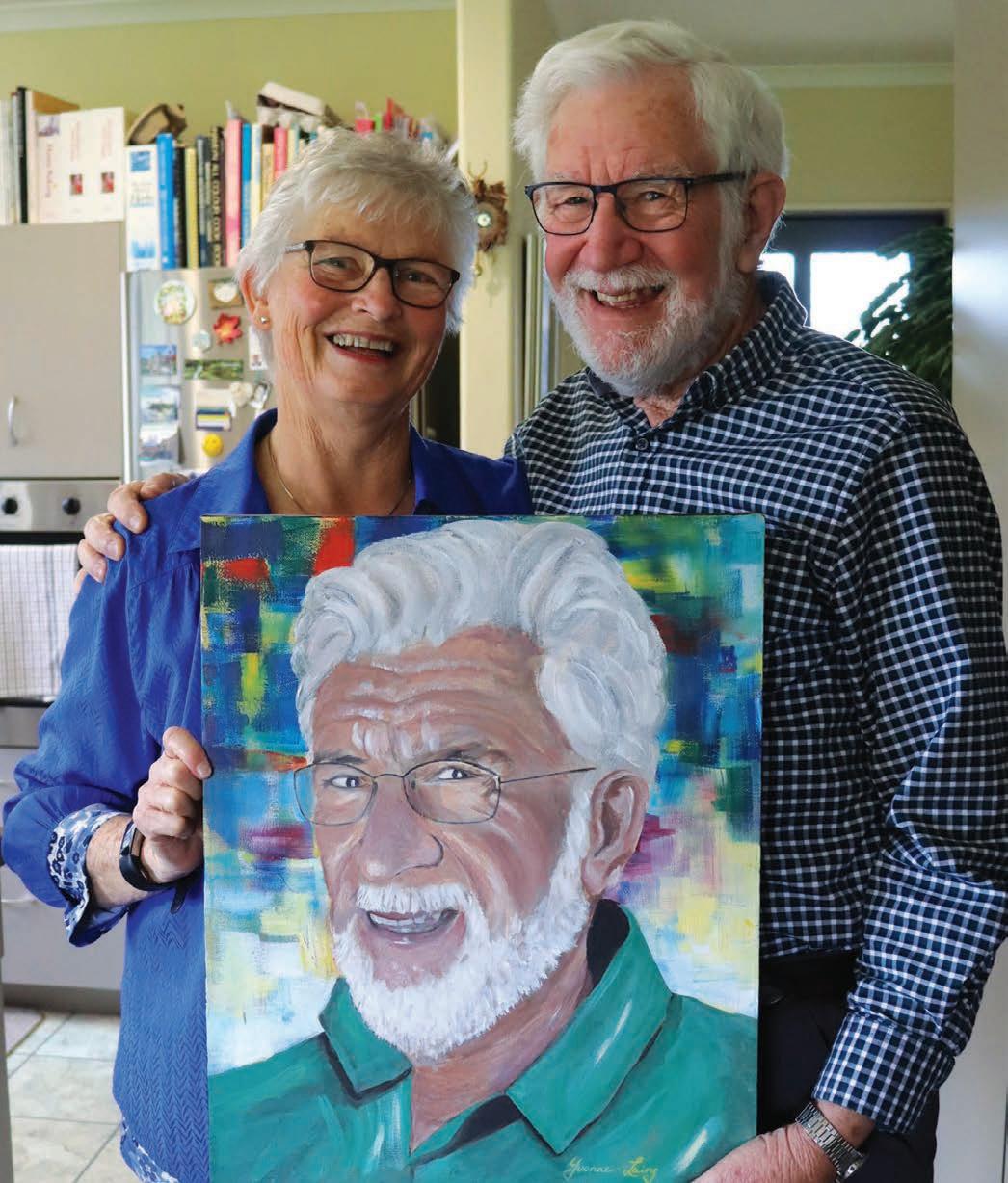
enough, but back then there was a stigma around it and those with it were hidden away. We walked through each village aiding affected families. An Australian orthopaedic surgeon and his team came each year with all the equipment needed to operate on these children. Now, 50 years later, this programme is still running.”
Nowadays, Ron re-creates – by hand – miniature versions of the stone miners’ cottages of 1850s Otago, as well as several versions of the Church of the Good Shepherd on Lake Tekapo. “I found the floor plan online. My version is 1:30 scale. The shape is formed from cement sheet and the roof is malthoid. I hand-cut the tiles. The wall cladding is beach pebbles, from Greymouth and Invercargill. I glue them on individually, then put mortar over the stones and apply glaze coats once it’s dry. Each building takes about a week to make. This is my fourth Church of the Good Shepherd. I have also made a Lyttelton Timeball Station.”


Yvonne’s hobby had little correlation with her career as a nurse. “When I retired, I took up painting at my twin’s suggestion,” she said. “Lorraine told me that anyone can learn to paint if they observe accurately. You won’t know if you don’t try. I soon found enjoyment and relaxation painting with the small art group here.”
Yvonne will give anything a go, and paints people, animals, birds and scenery equally well. “My first portrait was for my mother-in-law. Ron’s dad had died when he was young and his mum, whose eyesight was failing, had only small photos of him, so I painted a large portrait for her. Mum loved it. She said, ‘It’s just like him. You have caught the sparkle in his eyes.’ That gave us both a lot of joy.”
Yvonne works from her own photographs or makes things up in her head. “Once when on holiday in the Swiss Alps we saw two St Bernard dogs sitting on concrete while their owner charged people to take photos. When I painted them, I changed the
backdrop to the mountain scene nearby – more their natural environment than the concrete car park!”
While Yvonne paints for enjoyment and doesn’t advertise, news of her paintings has spread through word of mouth. She has been commissioned by fellow residents and lots of folk in the wider community to paint for them.

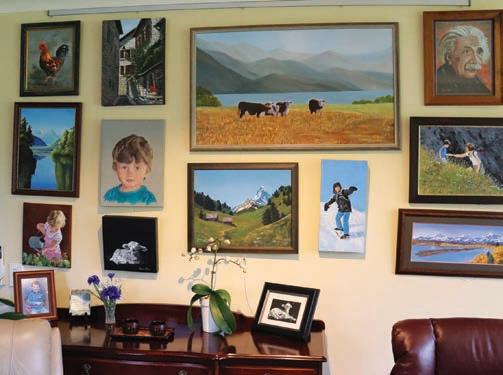
“We have lived in the village for 16 years. I am encouraged when I see people enjoying my hobby.”
Ron re-creates – by hand –miniature versions of the stone miners’ cottages of 1850s Otago, as well as several versions of the Church of the Good Shepherd on Lake Tekapo.
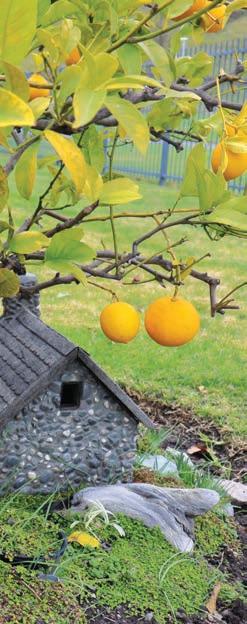 Above: Yvonne paints a range of subjects.
Above: Yvonne paints a range of subjects.
Summerset is turning 25, so the number 25 is on my mind! A quarter of a century seems like a long time, but in the same breath it feels just like yesterday.
Twenty-five years ago I had just turned 30 and was a new mum. My mind can go back there in a flash, especially now I have nieces and nephews in their 30s with little people in their lives. I had the pleasure of looking after my three-month-old great-niece recently, and wrapping her up and rocking her to sleep seemed an automatic reaction when she started to have that faraway look. It was such a pleasure to have her be the sole focus of my day. Before I know it, she will be 25! Time seems to be going past at an ever-increasing rate.
When I think back to my 25-year-old self, I wonder what I would advise her? Would it be any different to the conversations I’ve had with my 23- and 27-year-old children? I’d tell my 25-year-old self not to worry too much about moving to a new town.

When I got married, I moved to RNZAF Base Ohakea to live, and my poor new husband must have felt a bit perplexed because I was weepy all the drive south from Auckland. I’d remind that young version of me that although she might feel nervous about making friends and being in a totally foreign environment, in three-and-a-half years’ time she will be crying as she leaves to drive north again, having made lots of friends! And I still have those lovely friends today.
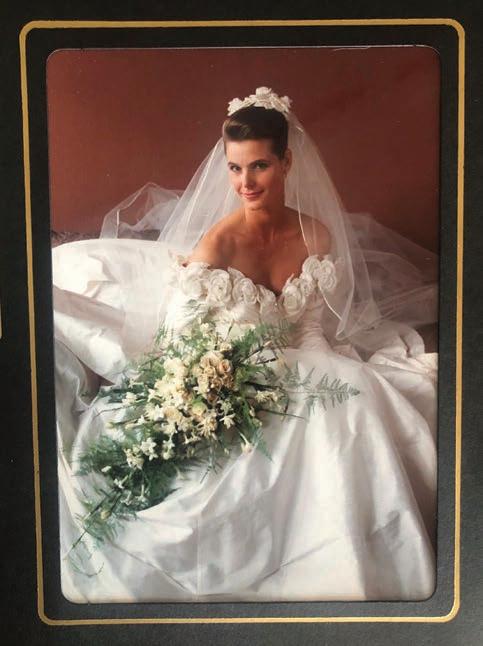
Two of my kids have made their adult lives in a different country. While there have been tricky times, I have encouraged them to just box on for a bit, because it takes a while to feel comfortable anywhere new. Sure enough, things did get better. Big decisions are best made after the passage of a bit of time. If the situation really isn’t improving then, all well and good, move on, but you must
Top right: Jude on her wedding day.
give things a chance. Pushing on through the hard bits is part of becoming more resilient, and that is a trait we all need in life so we can ride the bumpy bits. As long as you have someone in your corner who loves and supports you, you can get through.
I’d also tell my 25-year-old self to get into the habit of exercise. That would have been useful, because I now have a middle-aged torso that is not as trim as it used to be, and I would love to feel excited about exercise routines.
I’d also advise her to stick with the sense of humour she’s had all her life, because it’s good to be good-humoured. Lots of things in life are not as serious as we think they are. Worry less, laugh more and enjoy life as much as you can, at every different stage you pass through. It goes by more quickly than you think!
Throughout this year we’ve been working with a number of aged care providers and the New Zealand Aged Care Association in a group called Aged Care Matters (ACM).

This group has been set up to advocate for realistic government funding in aged care, including the issue of pay parity for aged care nurses.
Funding for aged care is totally inadequate. The government pays aged care providers approximately $170 a night, which is not enough to feed someone, house them and look after the complex needs they may have, in common with many people in aged care. The sum is lower than most hotels charge and what the government pays for emergency accommodation.
While large providers like Summerset can continue to offer world-class care for our residents, this is becoming increasingly difficult for small not-for-profit providers, with many shutting up shop. They provide more than 50 per cent of the beds in this country, and if they can’t operate, the implications for our health sector and for New Zealand’s elderly are very serious.
ACM has had a lot of success raising the profile of this issue and getting it in front of lawmakers. However, governments move slowly and we need
to keep this issue front of mind if we’re going to see changes made in our sector.
In early November, an advertising campaign went live to directly target Parliament with billboards, social media posts and radio and digital ads. All the ads were designed to be in and around parliament to get in front of as many politicians as possible.
The ads aim to paint a picture of what the aged care sector will look like when leaders of the Labour party are in their 80s. Jacinda Ardern and Grant Robertson have been ‘aged’ to make the images stand out and capture people’s attention. This is a critical issue for us as an industry and we’ll continue to work for a better and more equitable funding arrangement for our sector.



Take a look at some of the recent village happenings.

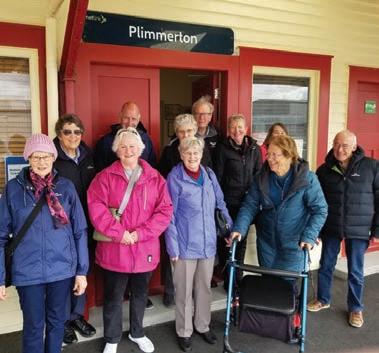
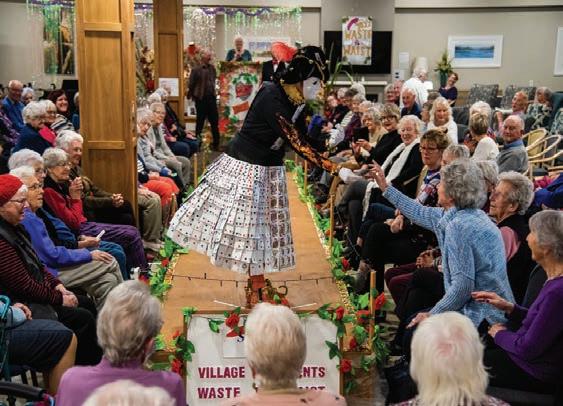





Photo 1: It’s dinner in Austria at Summerset at the Course.
Photo 2: Aotea residents create teddies for Ukrainian children.
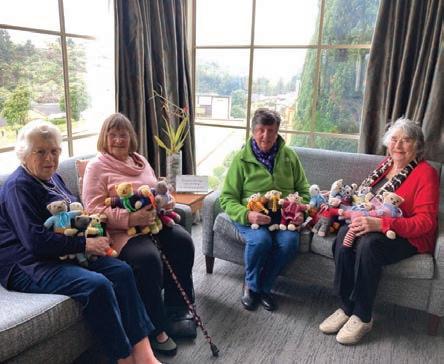
Photo 3: Summerset Palms residents in Te Awa celebrate the Melbourne Cup.
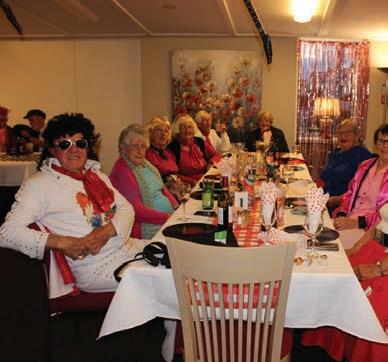

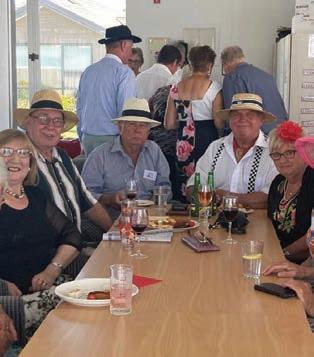
Photo 4: Summerset by the Lake celebrates their 21st birthday.
Photo 5: Fab costumes as always at Summerset in the Sun’s annual Waste to Waist.
Photo 6: Summerset on the Landing residents prefer to ride the rails.
Photo 7: Elvis is in the building at Summerset in the Orchard’s rock ‘n’ roll party.
Photo 8: Summerset in the Dunes in Papamoa think pink for their Pink Ribbon breakfast.
Photo 9: Summerset by the Park residents cruise the Wauiku River on the Ratahi .
Photo 10: The chips weren’t down for Summerset at Karaka’s casino night.
Photo 11: Chocks away!











Summerset on Summerhill men make a flying visit to Ohakea air base.
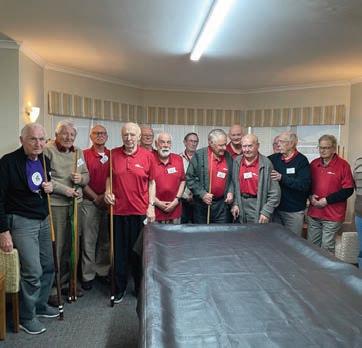

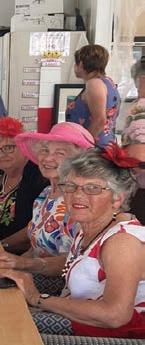
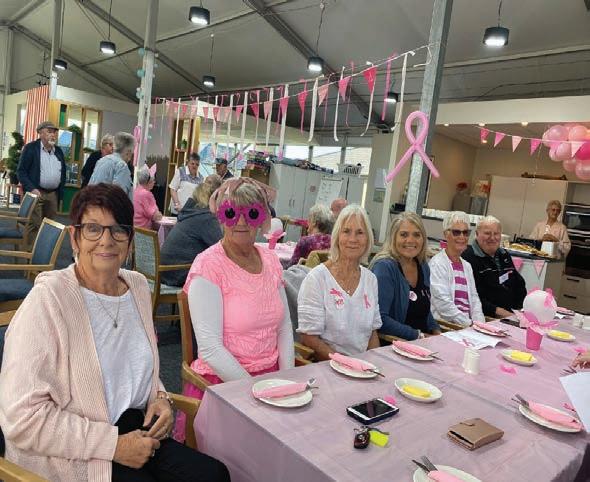
Photo 12: Cheers! Summerset on Cavendish men enjoy a trip and a tipple at a craft brewery.
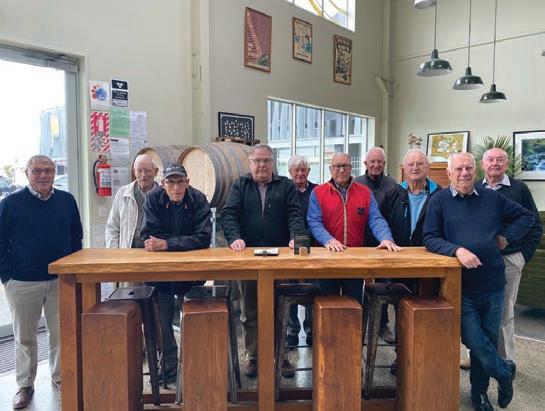
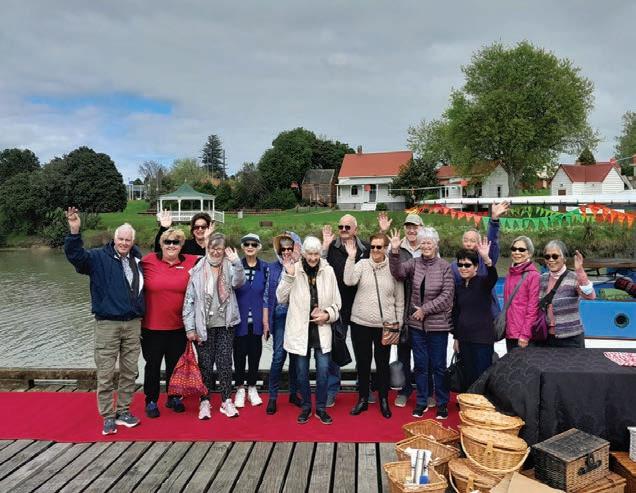
Photo 13: Summerset on Cavendish residents introduce children from Northcote School to the joys of bowls.
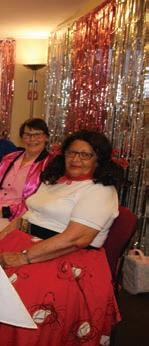

Photo 14: There’s nothing wrong with a bit of friendly competition! It was Summerset in the River City versus Summerset by the Ranges in a recent eight-ball match.
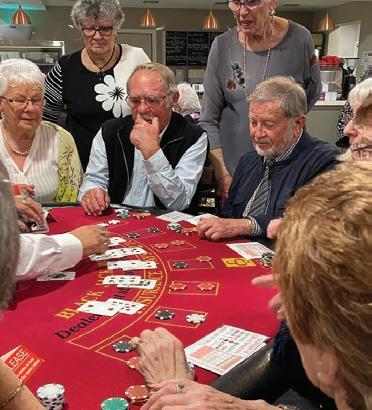
Photo 15: Looking roarsome! A Summerset Richmond Ranges resident gets his face painted.
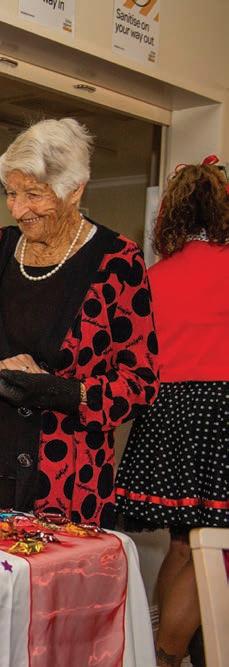

Brent Davis is Sales Manager for Summerset on Summerhill in Palmerston North and Summerset in the River City in Wanganui. He is one of our longest-serving members of staff, having been with Summerset for more than 20 years.
“I grew up in Ashhurst, 14km north of Palmerston North. My parents ran a garage and petrol station. I owned and operated my own garage in the 1990s, which I later sold. I helped a friend build houses while I contemplated my next career move.”
Brent joined Summerset on Summerhill as Village Coordinator. At the time, Summerset was a new company with only seven villages and the Village Coordinator role was a combination of property manager, sales and activities coordinator. “I applied because I had practical skills, and I enjoy being around people.”
Brent’s first few months were spent dashing around as the role was so varied. “Long workdays were common.” Says Brent. As Summerset grew, the role of Village Coordinator expanded and was split in three separate roles instead. Brent chose to take the full-time Sales Manager role.
Brent became Summerset’s unofficial roving Sales Manager, on hand to help advise other staff and launch new villages. He has also seen his fair share of all-hands-on-deck moments. “Summerset has grown so much!” he says, laughing. “Dunedin was my first village launch and it was not without its challenges.”
A series of mishaps and bad luck almost derailed the planned launch event of Summerset at Bishopscourt. Bad weather meant that the plane carrying the Head Office team was diverted to Christchurch, and they had to scramble to find enough hire cars to drive the rest of the way. “The hall was packed with interested members of the public on the night. After a long wait, the back door was flung open and Nora Barlow [CEO at the time] sauntered up on stage as if nothing was amiss!”
The Sales Manager role requires giving as much information as possible to prospective residents about Summerset so they are comfortable deciding on a future they can enjoy with no worries. “The days of writing and voicing adverts for radio and newspapers are well in the past. Prospective residents have more knowledge about retirement villages and the lifestyle on offer. I would still much rather pick up the phone for a chat than send an email though,” says Brent.
After two decades at Summerset, Brent still clearly enjoys it. “Summerset puts the best interests of its residents and staff first. Working here is hectic, exciting and always interesting.”
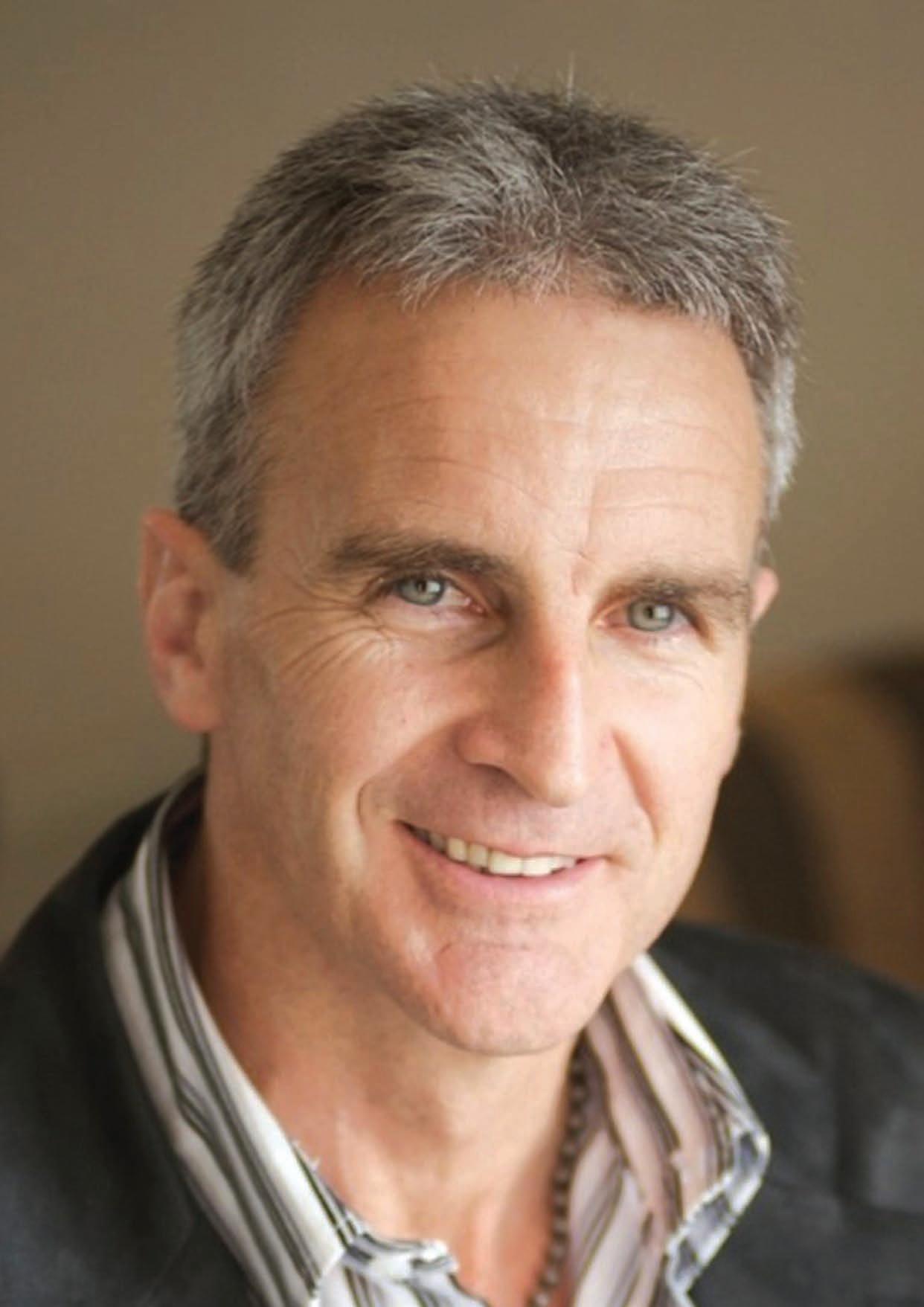
“SUMMERSET PUTS THE BEST INTERESTS OF ITS RESIDENTS AND STAFF FIRST”
This historical novel opens in the small mining town of Blackball on the West Coast. Otto Bader and Pansy Williams are caught up in an intoxicating love affair. They keep it quiet for the time being, but they plan to spend their lives together, have a family and grow old.
However, the First World War brutally rips the young couple apart when Otto, who is of German descent, is removed from his home and forced to spend the duration of the war interned on Matiu/Somes Island in Wellington Harbour as an ‘enemy alien’. His internment is made all the more poignant as the glittering lights of Wellington are so close yet a world away.
Otto’s story is told through a series of lengthy letters to Pansy. She falls pregnant and marries her childhood friend Clem Bright, whose story is told through the eyes of their daughter, Lena. Lena reveals the family’s difficulties, especially when Clem returns from war both physically and psychologically damaged.
RRP $37.99
Barefoot R. V. BAYLEYPaddy Richardson has created a compelling and haunting love story, beautifully written and meticulously researched. The ending moved me to tears. This is storytelling at its best.

In Wellington in 1939, Adelaide meets John at a church picnic when he dives into a river to rescue a young girl in trouble. John is 10 years older than Adelaide, and a widower following the death of his wife from cancer. Adelaide has endured an extraordinarily confined and strict childhood, so a relationship with John is a beautiful new beginning for her. She delights in being married to this caring, stable man.
But then war is declared, and like many men at the time, John’s sense of duty causes him to enlist and he departs to Egypt. His letters from this far-off land are the only thing that keeps Adelaide going through their enforced separation. But then the letters stop arriving…
I couldn’t put this book down once I had started reading it. Barefoot is eloquently written, and it’s such a touching love story. It’s an understated tale, but it perfectly captures the era and the tender, raw emotions of a newly married couple forced apart by war. I thought it was a superb read, and I hope this very talented author writes another book soon.
RRP $30.00
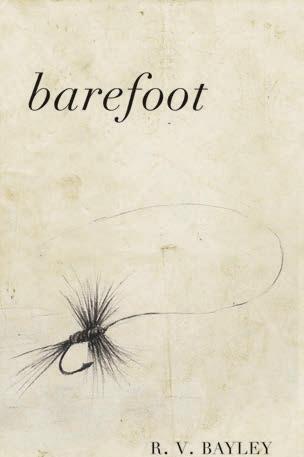

Something for the grandchildren! Annual 3 is the perfect mix of fiction, poems, essays, art and crafts for children aged 9–13, all written by talented New Zealand authors and creators. There is something here for everyone’s taste, with contributions from both well-known names and new talent.
I love the diversity in this robust hardback volume. Who can resist a comic about head lice, which have been “infesting hair since the dawn of time”? Or a ‘Knit Your Own Brains’ knitting pattern, made with pink yarn and stylishly photographed? There is also a song with sheet music, ‘Same Blue Sky’, so you can practise your piano-playing skills, along with variety of poems and flash non-fiction. You can learn how to be a better environmentalist, forage for kai or enjoy photos showing how to replace the toilet-paper holder when it’s empty. There are also some great short stories and oodles of illustrations.
Annual 3 is a true treasure trove of diverse material with broad appeal. Now excuse me while I finish the crossword by Ben Brown on page 74…
Cassandra Reeder is a self-confessed geek who creates food inspired by books, movies and TV. To celebrate The Princess Bride turning 35, Reeder has created 50 recipes that pay homage to the movie. Some recipes are inspired by an analysis of the film, while others are prompted by silly puns or historical elements. So what recipes feature in the book, pray tell?
Who could resist the ‘Prepare to Die, Fiery Spanish Croquettes’, inspired by one of the famous lines in the movie? They are so spicy, Reeder says, that you need to alert your taste buds to “prepare to die!”
Florin is the fictional kingdom where the movie’s story takes place. Reeder has imagined that people might eat cuisine similar to that of the Danes in her creation of a fictional national dish.
She even has a ‘Swordmasters’ Fon-Duel’ (enjoy the pun!), inspired by the famous sword fight. And if you’re after something sweet, you can’t go past the ‘Twu Wuv Twuffles’, a play on the many monologues about true love in the book and film.
What more can I say? This cookbook is utterly delightful, quirky and playful, and the dishes you can create from it are perfect to pair with your next screening of this fabulous film!

For Peter, his love affair with model trains began 73 years ago, as a 12-year-old in England. “I had a Trix Twin 00-gauge set that ran on three-rail track. It was called ‘Twin’ because the system powered one engine from the centre and one outer rail, and a second engine from the centre and other outer rail. I extended my railway over time and kept it on an 8ft by 4ft sheet of ply in my bedroom.”
When Peter married Beryl, the train set was packed away for a few years. “Suffice to say, Beryl didn’t want it in our bedroom,” Peter says wryly. Later, the couple’s three sons showed an interest, and the train set was resurrected and put on display in the house again. But space was at a premium, and the large set had to be put away as the boys got older. “No space anywhere was a big reason we left England,” Peter recalls. The family emigrated to New Zealand in 1974 and the trains were boxed up and shipped over, along with their other belongings.
Located in Glenfield in Auckland’s North Shore, the new family home had a basement, giving Peter the space to put up his model railway and build his 00-gauge collection once more. “The oldest model I have now is from 1956. It is a Triang Princess Elizabeth locomotive and tender. It cost the equivalent of just over $6, which was a princely sum in those days.”
Model railways have always held enduring fascination for their fans, thanks in no small part to the intricate details of the miniature worlds surrounding the tracks. The pastoral landscape around Peter’s railway is modelled on 1950s England, and he has a pamphlet explaining his layout. The bucolic green hillsides are made from screwed-up papier mâché covered in plaster of Paris, the grass is PVA glue covered in flock and Peter has used matchsticks to make the fences. “When I was young, I didn’t have any of the detailing,” he says. “Now this is the part of modelling that I really enjoy. I am currently trying to make it look like milk is going into the tanks of the wagons, so I am building a gantry out of matchsticks. One of the joys of railway modelling is – like so many things in life – if you can think it, you can do it.”
Peter’s train world is huge, and he has it on castors to move it around his double garage easily. Underneath his layout is space for him to store all his supplies. The trains are operated from a gap in the centre, where he has his digital control command. “They are also easier to operate now, as trains are digitally controlled. Each train has its own chip – so much technology goes into them now,” he says.
What does Summerset by the Lake resident Peter Blackman have in common with basketball player Michael Jordan and singers Neil Young and Rod Stewart? They are all skilled in the art of railway modelling.
Top left and right: Detailing the railway is an enjoyable pastime for Peter.
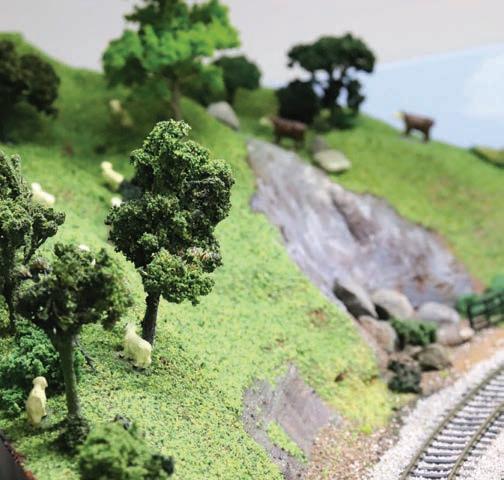

Bottom left: One of Peter’s engines.

Peter is secretary of the Taupō Model Railway Club Inc., where he has been a member since he moved to the village three years ago. “There are currently 23 members, and we meet every week at the clubrooms. We help each other with techniques and visit one another’s layouts,” he explains. Incidentally, the Trix Twin engines are now on display in the clubrooms.
The key components of railway modelling are undeniably trains, tracks and motors. As these are all made overseas, the second-hand market in New Zealand is very strong. “I bought a whole host of stuff from someone in Hawke’s Bay who had a huge collection, including a box of fencing for $10 and a King Class locomotive for $100. That retails for over $300 new. I would always advise keeping the boxes for anything: the value of the item goes up so much more with the original box.”
Peter has lived in the Taupō village with his second wife, Susan, for three years. “We love it here. It took only three months from visiting friends here to moving in ourselves! I am now treasurer of the
Residents’ Committee too. It was easy to integrate. People are friendly, and the village staff are excellent. Taupō is a buzzy place too. When Susan and I aren’t exploring in our campervan, I do something on my railway most days.”
So, what else do you need for railway modelling besides the engines? To ensure the trains run smoothly, Peter recommends a mirror to check the tracks are laid straight and a handheld vacuum cleaner to keep the tracks dust-free. And, he says, “Patience! Lots of PVA glue and newspaper, and money! You can be creative though; YouTube has some great model sites for inspiration.”
Model railways have always held enduring fascination for their fans, thanks in no small part to the intricate details of the miniature worlds surrounding the tracks.

SUMMER’S LATEST SHOE TRENDS.
Surely one of the greatest benefits of ageing is wising up about the importance of comfort over style. There’s no point wearing a pair of beautiful shoes if they hurt your feet, because that pain will show on your face, not to mention in your posture. Once upon a time, that would have meant resigning yourself to a life in shoes that only an orthopaedic expert could love. Luckily, shoe designers and manufacturers are getting smarter about the interplay of trends and support, which means there are lots of fabulous ways to put your best feet forward this season.
Few things are more cheerful – or eye-catching –than a boldly coloured pair of shoes. Summer, when the natural world is alive with bright shades, is the ideal time to embrace colourful footwear. A pair of sandals in lively tones will add a pop of interest to any outfit, even if it’s a white T-shirt and a pair of jeans. If you’re not sure what colours will suit what’s in your wardrobe, think about the relationships between shades. Bright jewel tones (red, cobalt blue, green, purple) will harmonise well together, as will paler tones like white, duck-egg blue, lemon yellow and baby pink.
Slip-on shoes effortlessly glide between casual and chic. If casual style is more your thing, there are endless slides to choose from, whether you prefer a closed-in toe or a barely-there sandal. Chunky
soles are a great way to add a little height without sacrificing comfort or stability. If you don’t feel properly dressed up without a heel of some kind, or you’ve got a summer wedding to attend, look out for a low-heeled mule (otherwise known as a slip-on sandal) that you can kick off under the table when the dancing starts
Nothing will impress your grandchildren more than being able to keep up with (or at least feign an interest in) their encyclopaedic knowledge of sneaker trends. A pair of Converse canvas sneakers (which you may remember playing sports in, back in the day) is a sure-fire way to wow the next generation. These casual kicks come in multiple colours and can be worn with just about anything. Bright white canvas sneakers are an easy way to update any outfit (use a solution of baking soda and white vinegar to sponge away any dirty marks, then dry them in the shade).
One of the most confounding trends of recent times has seen fashionistas tying strappy heeled sandals over trousers. Thankfully that moment has passed, but strappy shoes are bang on-trend this summer, whether you fancy a sandal that stays securely on your foot or a sweet Mary Jane style. Straps (even, perhaps, when tied on over your trousers) provide useful support for your feet and ankles, which just goes to show that sometimes form and fashion can have something in common after all.
“SUMMERTIME AND THE LIVIN’ IS EASY” – PORGY AND BESS
SUMMER IS DEFINITELY MY FAVOURITE SEASON, WITH ITS SUN, SWIMS AND AFTER-DINNER WALKS. IT’S A TIME TO RECHARGE THE BATTERIES. IT’S ALSO TIME FOR EASY EATS AND GATHERINGS WITH FRIENDS. SO IT’S A GOOD IDEA TO HAVE A FEW TREATS IN THE FREEZER OR FRIDGE FOR UNEXPECTED DROP-INS OR SPUR-OF-THE-MOMENT PICNICS.
Meatloaves are a true summer standby. They can be dressed up with a selection of summer produce and pickles or served as is between slices of bread. I make two loaves at a time – one to eat straight away and one for the freezer. Stored correctly, they will freeze well for up to 2 months.
My summer meatloaves recipe provides at least eight servings. If you need one large loaf, then use a 24cm × 13cm loaf pan. Divide the meat mixture into three equal portions and pat one evenly over the base of the pan. Top with half the

red capsicum strips, one more meat layer, the remaining capsicum, then the final meat layer. Bake in the oven for 50 minutes, brush with the glaze, then cook for another 10 – 15 minute s.
Alternatively, microwave the loaf in a suitable container. Place it on a rack and cover with a paper towel. Cook on half (50 per cent) power for 5 minutes. Stand for 5 minutes, then continue cooking on half-power for another 5 minutes or until cooked. Enjoy a wonderful summer with your family and friends!

Marinade
3 × 4cm strips lemon peel
3 cloves garlic, chopped
1 tablespoon each: brown sugar, canola oil
2 tablespoons each: soy sauce, fish sauce
Chicken 350g chicken breast, skinned and boned
Dipping sauce
¼ cup each: sweet chilli sauce, lemon juice
Combine the marinade ingredients in a small blender and mix until smooth.
Cut the chicken into strips about 1cm wide by 8cm long. Place in a bowl. Add the marinade and mix well. Cover and refrigerate for at least 1 hour or overnight. Stir once or twice. Meanwhile, combine the dipping sauce ingredients in a small bowl. Thread the chicken strips like a ribbon onto the bamboo skewers. Preheat the air fryer according to the instructions. Place the skewers on the rack in the air fryer and cook for 5 minutes or until sizzling and done. They may have to be cooked in batches. Serve as a snack with the dipping sauce.
If you don’t have an air fryer, pan-fry the skewers on a ridged frying pan or grill them for about 2–3 minutes on each side.
I bought 9cm bamboo skewers at a $2 shop. Pare the lemon with a potato peeler to make the lemon strips.
Glaze
¼ cup each: sweet chilli sauce, tomato sauce, lemon juice
1 tablespoon brown sugar
Loaves
1 small red capsicum, seeded and cut into 1cm-wide strips
2 shallots, finely diced
2 garlic cloves, crushed
750g lean minced beef
750g minced pork
1–2 teaspoons curry powder
1 tablespoon each: dried mixed herbs, Worcestershire sauce, soy sauce
¼ cup finely chopped parsley
2 eggs, lightly beaten
Stir the glaze ingredients in a bowl to dissolve the sugar. Place aside. Quickly blanch the capsicum strips in boiling water. Refresh in icy water. Pat dry.
Preheat the oven to 180°C and place an oven tray on the middle rack. Lightly brush two 19cm × 9cm loaf pans with oil.
Combine the shallots and garlic with the meat in a large bowl. Add the spices, herbs, sauces and eggs, and mix well.
Divide the meat into four equal amounts. Place one portion on the base of each loaf pan. Top with half the capsicum strips, then cover with the remaining meat. Pat down firmly. Brush the tops with half the glaze.

Place the loaves on the oven tray. Bake for 40 minutes. Brush with the remaining glaze and continue baking for 10 minutes, until cooked. Serve warm or at room temperature.
The method here makes two smaller loaves; to make a single larger meatloaf, see the instructions in the introduction. The recipe may also be halved.
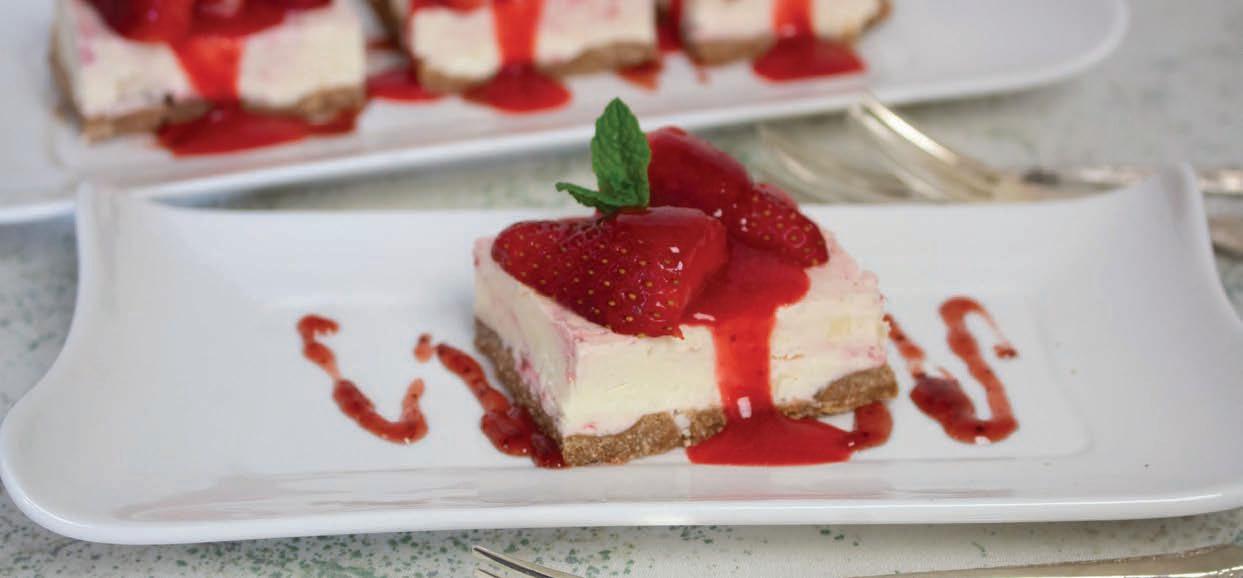
Base
250g chocolate wheaten biscuits or similar
200g butter, melted
Strawberry purée
¾ cup sliced strawberries
1 tablespoon caster sugar
2 tablespoons lemon juice
Cheesecake filling
1 tablespoon powdered gelatine
3 tablespoons water
375g cream cheese at room temperature
¼ cup caster sugar
1 cup cream, whipped
Lightly oil a 30cm × 18cm slice pan. Line the base and sides with baking paper, ensuring it comes up over the sides.
Finely crush the biscuits and combine with the butter. Pat evenly into the pan. Chill for 1 hour.
To make the purée, place the ingredients in a small saucepan. Simmer gently for 5 minutes, stirring occasionally, until the berries are soft. Purée until smooth. Cool.
Soak the gelatine in the water for a few minutes. Dissolve over hot water or in the microwave briefly. Cool a little.
Beat the cream cheese and caster sugar together until smooth. Stir in the gelatine. Fold in the whipped cream. Swirl in half the purée. Spoon evenly over the base and smooth the top. Cover and chill overnight. Cut into squares to serve.
This is great topped with fresh berries and drizzled with more purée or a little melted strawberry jam.
Crumple the baking paper before using it to line the pan as this will prevent it from curling up on itself. The slice may be cut and frozen for up to 2 months. Garnish just before serving.
Nothing says summer like snacking on sun-warmed berries, and the good news is that they can be grown even in the smallest of plots, writes Lynda Hallinan.
I’ve never heard of a gardener grumbling about growing too many berries. Have you? Unlike courgettes and feijoas – the edible gardening embodiment of the adage that familiarity breeds contempt – berries are seasonal juice bombs oozing deliciousness, whether piled high on pavlovas, baked into pies or boiled in preserves.
When I was a child, my mother grew fine, fat berries in a square cage rigged up by my handyman father. The cage had a heavy netted lid designed to foil foraging birds, though it was no match for my sister and me. In a rare act of sibling solidarity, we’d tag team, with one of us holding up the lid while the other reached in to nab a handful of succulent berries. Our parents were none the wiser, though perhaps they did occasionally wonder why their strawberry yield began to fall as we grew up.
Last winter, my children and I divided up our own strawberry patch. Strawberries are notorious for losing vigour as they fruit their hearts out, so it’s best to replace the old crowns with new bare-root runners or divisions every couple of years. We spaced the plants 30cm apart in a spare spot in one of my flower beds, and they were coming along nicely until the pet lambs got out and got into them. Our crop suffered a second setback later in the
season when the family Labrador developed a taste for them. Which is all to say, berries fruit brilliantly, provided you keep the pests at bay.
In a small tub or trough, strawberries crop proficiently provided the plants aren’t allowed to get too dry or hot. Keep the plants’ roots cool with mulch or pea straw, an added benefit of which is that it stops the fruit coming into in contact with damp soil and rotting. Although they’re sunseekers, position potted berries somewhere with a little respite from the sweltering heat of midday, or plant in plastic pots tucked inside decorative ceramic pots for a layer of cooling insulation.
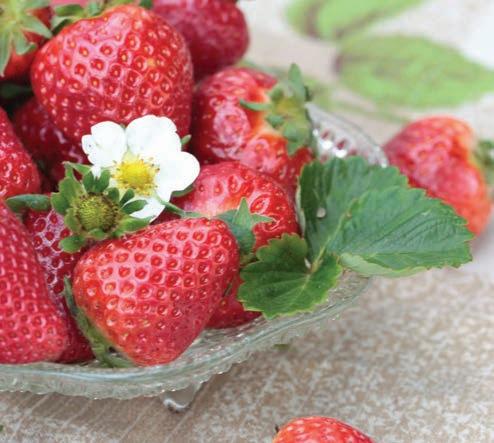
Berries are best eaten fresh on the day they were picked. If you do need to refrigerate store-bought berries, give them a rinse in water with a splash of white vinegar added it to improve their shelf life.
If you have no space for growing your own fruit but yearn for the taste of homemade strawberry jam, seek out second-grade punnets from berry farms. These berries, often smaller or slightly misshapen, are ideal for preserving in small batches. Because strawberries, raspberries and blackberries are low in pectin – the natural gelling compound that helps jams to set – I use jam-setting sugar for perfect results in a matter of minutes.
• Strawberries are easily grown in 10-litre pots. They do best if replanted each year. Feed as soon as the plants start to flower and cover with netting to keep the birds out but still allow bees in. Although strawberries are self-fertile, they taste sweeter when pollinated by bees. Popular varieties include ‘Camarosa’ and ‘Pajaro’.

• Blueberries prefer acidic soil conditions; use potting mix designed for camellias or citrus, and add extra peat. Keep the roots cool with a generous layer of mulch over the soil surface, and protect the ripening fruit from birds with netting. For the best flavour, wait two weeks for the fruit to fully ripen after it first turns blue.
• Bramble berries such as raspberries and blackberries can be grown in surprisingly small spaces, as they grow up rather than out, with the proviso that they need a supporting trellis to clamber over. Grow them on the same frames as runner beans, peas or sweet peas, and opt for thornless varieties such as ‘Black Satin’
Simply rinse, slice and hull 1kg strawberries, place in a medium-sized saucepan, add a splash of water and bring to a gentle simmer over a low heat until the berries release their juice. Then add 1kg Chelsea Jam Setting Sugar (from supermarkets), stir until the sugar has dissolved and turn up the heat. Boil hard for exactly 5 minutes, pour into small jars and voilà, you’ve made strawberry jam –or ice-cream sundae topping – that tastes as good as anyone’s gingham pinny-wearing granny used to make!
Use the same method to make your own decadent blackberry jam. Nothing – except for lashings of whipped cream, a dusting of icing sugar and a hearty dash of nostalgia – could make them taste sweeter, though adding a naughty nip of almond liqueur as you take the pot off the heat intensifies the flavour of blackberry and boysenberry jam.
blackberries if you’re not keen on prickles. Note that thornless varieties won’t produce the same yields as big-croppers such as ‘Karaka Black’ or ‘Heritage’ raspberries.
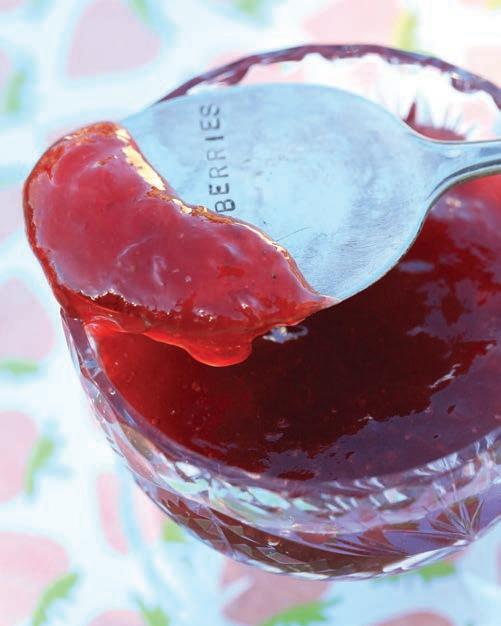
Discovered in 1842, cyanotype printing is one of the oldest photographic processes and was popular well into the 20th century for making architectural plans and maps, and for documenting botanical specimens like ferns and seaweed.
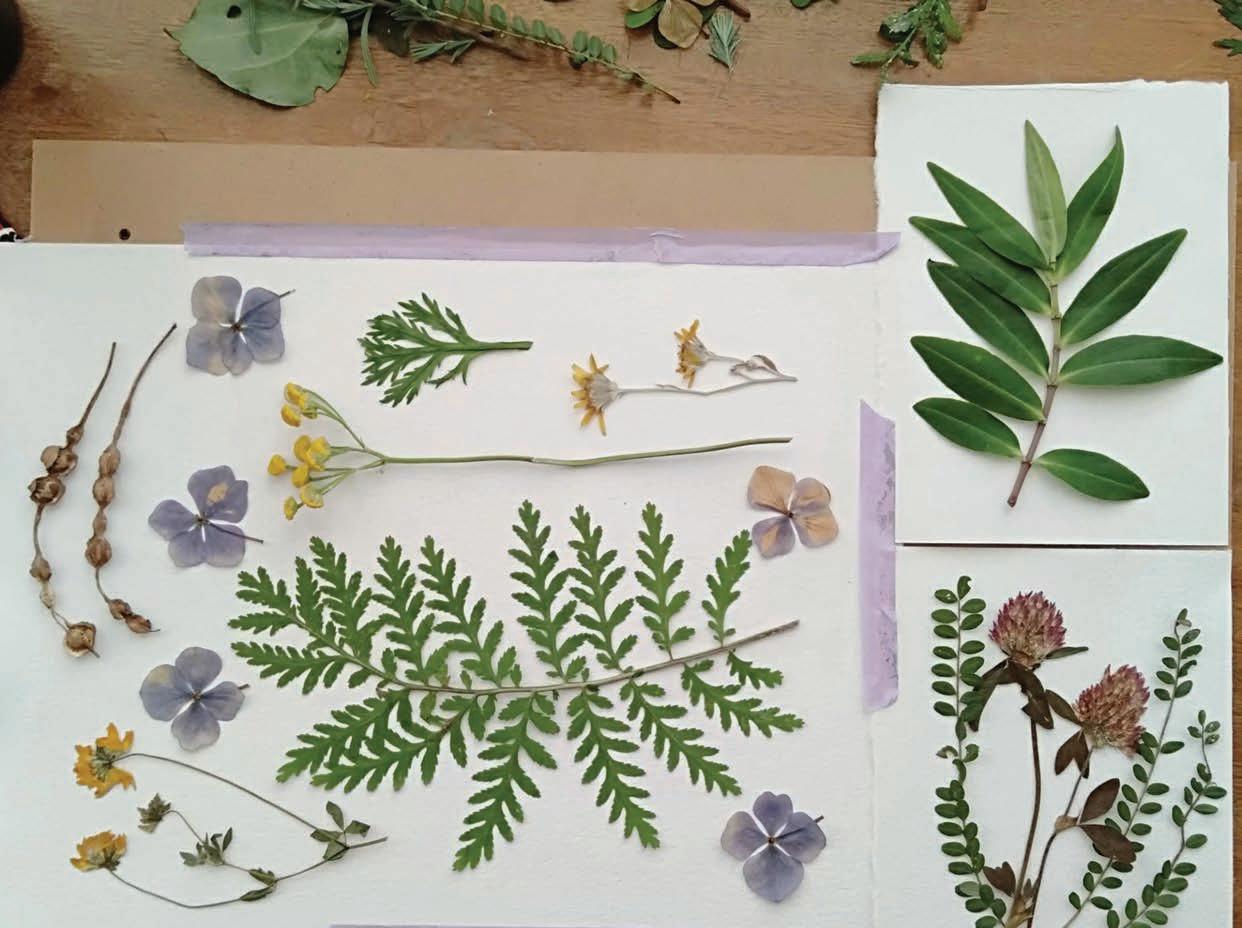
Cyanotype chemicals are now readily available and affordable, so why not make the most of the summer sun and plants by creating some unique cards, or artwork to decorate your walls or for gifts? The prints can also be cut into small pieces to make gift tags for Christmas.
Cyanotype printing is sometimes called sun printing, and it’s a wonderful way to celebrate this lighter and warmer time of year. I’ve outlined the basic method here, but you can experiment with different materials, mediums and even light levels. Be creative and have fun!
1. Arrange your cards on the board and tape down the edges to secure them in place.
2. Make up the cyanotype solution according to the directions. In a darkened space, mix equal amounts of the cyanotype solution Parts A and B in a container and stir well with a brush. If you are making one or two batches of cards, you will need only a capful of each solution component. Once mixed, the solution will keep for a few hours.
3. Staying in the dark space, paint the mixed solution over the cards to cover them, but not too thickly. I leave a rough border around each one.
4. Place the cards, still on their board, inside a cupboard or similar to dry without being exposed to ultraviolet light (about 20 minutes).
CRAFT CORNER5. Still in the dark, place the plant material over the dried solution to create your design. Have fun and be creative with this step! I like to use pressed plants, but you could also lay fresh leaves, ferns or even household objects such as keys or coins on the cards.
6. Once you are happy with the layout, place the piece of glass over the cards and clip or peg around the edges to secure it. Carefully carry the arrangement outside and place it in a sunny spot (make sure there are no shadows over the glass).
7. Leave your prints in the sun for between 2 and 30 minutes, depending on how bright it is. The solution will look bronze in colour once fully exposed.
8. Bring your prints inside and carefully remove the glass, masking tape and plants. Rinse each print in cool water in the sink or under the tap. You’ll see the cards turn a brilliant blue and your image will appear. Once the prints have been well rinsed, you can peg them on the washing line or leave them somewhere warm to dry.
Note: cyanotype is non-toxic, but care should be taken not to inhale or ingest the chemicals. You might like to wear rubber gloves while working with the chemicals.
• Sturdy paper or card, such as watercolour paper (I cut my A4 sheet into four postcard-sized pieces)
• Board, larger than your paper or card (I used the backing from an old picture frame)

• Masking tape such as washi tape
• Jacquard Cyanotype Set (found at Gordon Harris and other art supply stores), consisting of: Part A, potassium ferricyanide; and Part B, ferric ammonium citrate
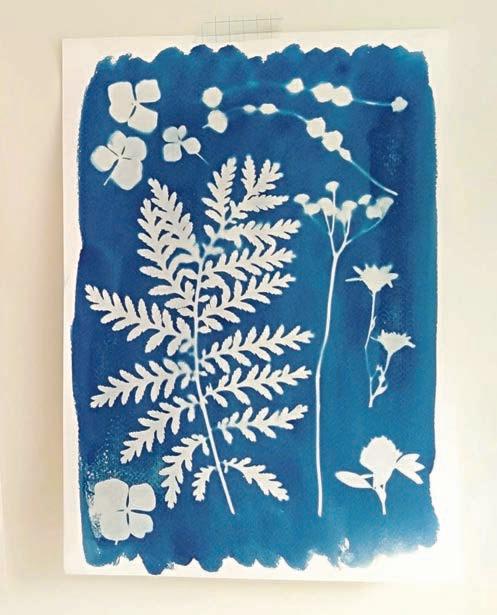
• Plastic container and paintbrush
• Various plant parts, such as flowers, ferns and leaves (the simplest to use is pre-pressed, but you can also use fresh plant material)
• A piece of glass (I used the glass from an old picture frame)
• A few clips or clothes pegs
You’ll also need somewhere dark to apply the solution to the paper, and a sink with running water to rinse your prints.
We’ve moved past the ‘going green’ phase of our sustainability journey to ‘thinking green’ right across the company. We’ve integrated sustainability into our business decisions and we’re challenging ourselves in all parts of our business to do better.

In our offices we think green when we choose Zoom over travel, when we mark edits on a PDF instead of a printout, and when we turn off the lights and the heat pump as we leave a room.
We think green when we choose low-nitrogen fertiliser for village gardens, and when we sort building materials at the construction site to divert them from the landfill.
We think green when we consider what can be refused, reduced, reused, repurposed or recycled.
As you go about your day, whatever you are doing, we encourage you to think green too.
This time last year we shared the news that Matilda the queen bee and her hive had arrived at Summerset at Bishopscourt in Dunedin. Now she has made her honey debut with her Floral Reserve Handcrafted Honey. Matilda and her hive have their own apiarist, Barry the Beekeeper. Barry helps the village maintain the hive, undertakes disease control, manages the regulation required and even jars the honey. Matilda’s honey is for sale to residents and the public through Summerset at Bishopscourt’s Divine Café.
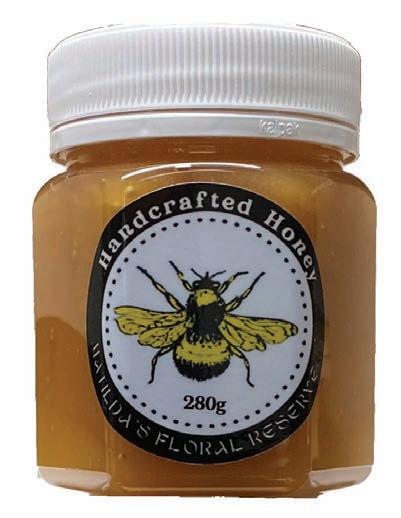
updateBishopscourt is a bee-friendly village, supporting our goal at Summerset of becoming more sustainable and environmentally friendly in the work that we do.
Some additional ways that Bishopscourt is bee-friendly include:
• designating ‘bee-friendly’ areas in the village gardens, planted with flowering plants that the bees love
• providing watering stations for the bees
• eliminating the use of harmful sprays or pesticides.
Summerset on the Landing residents came up with a novel way to recycle paper, card and back issues of Summerset Scene, creating fantastic costumes out of them! The village held their own mini WOW (World of Wearable Art) event. Old magazines make great material for collages too! What you will need
Summerset in the Sun residents took to the catwalk to showcase their fabulous creations for their annual Waist to Waste event. Old cabbage leaves took on a new lease of life as a dancing dress, as did playing cards, bubble wrap and paint samples!

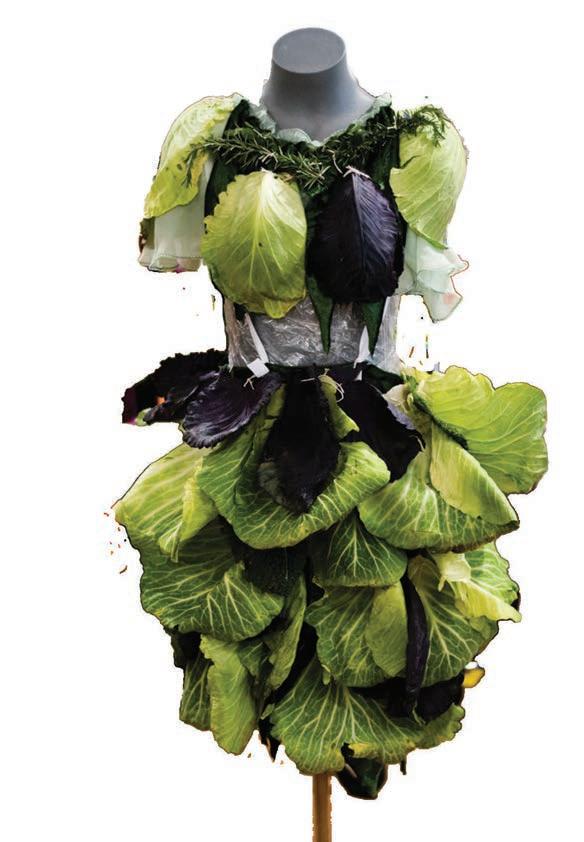
DIY CHRISTMAS CRACKERS – a great way to reuse toilet roll inners and scraps of wrapping paper
• Toilet rolls (two per cracker)
• Wrapping paper (enough to go around the toilet rolls)
• Double-sided sticky tape

• Cracker snaps
• Ribbon
• Scissors
Step 1
Summerset Mount Denby residents are doing their part to reduce paper and plastic waste by making sustainable Christmas crackers. A group of Christmas elves are involved in all aspects of cracker creation, from measuring ribbon, cutting, sewing, ironing and gift stuffing. Activities Coordinator Katrina Symonds says, “They are fully washable, reusable and have a full ‘crack’ in them for effect”.
Lay the wrapping paper plain side up and place a toilet roll in the centre. Cut the other toilet roll in half to make two little tubes. Place these either side of the first toilet roll, leaving approximately 5cm between each roll. Add a small piece of double-sided tape to the top of each roll. Place your cracker snap (if using) lengthwise in the middle of the paper.
Step 2
Start rolling the paper around the toilet rolls. When it’s snug and round against the middle one, push it down to secure to the double-sided tape. Pinch and twist in the paper in the gap between the middle toilet roll and one of the ends, then tie around it with your ribbon.
Now stuff your cracker – fill the middle toilet roll with little gifts, such as chocolates, mini hand cream or soaps. You can even write your own jokes if you wish! Once you’ve filled your cracker, twist and pinch the other end, and tie around with ribbon.
Cracker snaps available from Spotlight or kingfishergifts.co.nz.

Above: Residents of Summerset Mount Denby have been making their own reusable Christmas crackers - by recycling plastic and fabric.
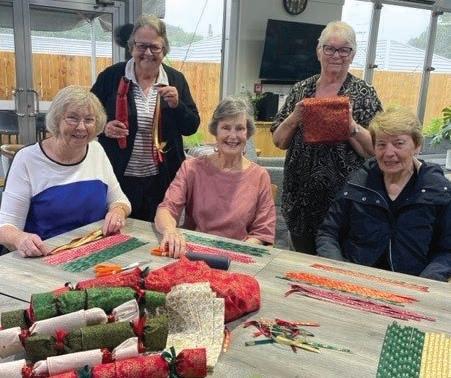
Known for its ever-sunny climate and vibrant arts scene, Nelson city is a fabulous holiday destination at any time of year. Positioned right in the centre of New Zealand, it offers an abundant coastline, expansive areas of natural beauty and all the city attractions you could ask for.
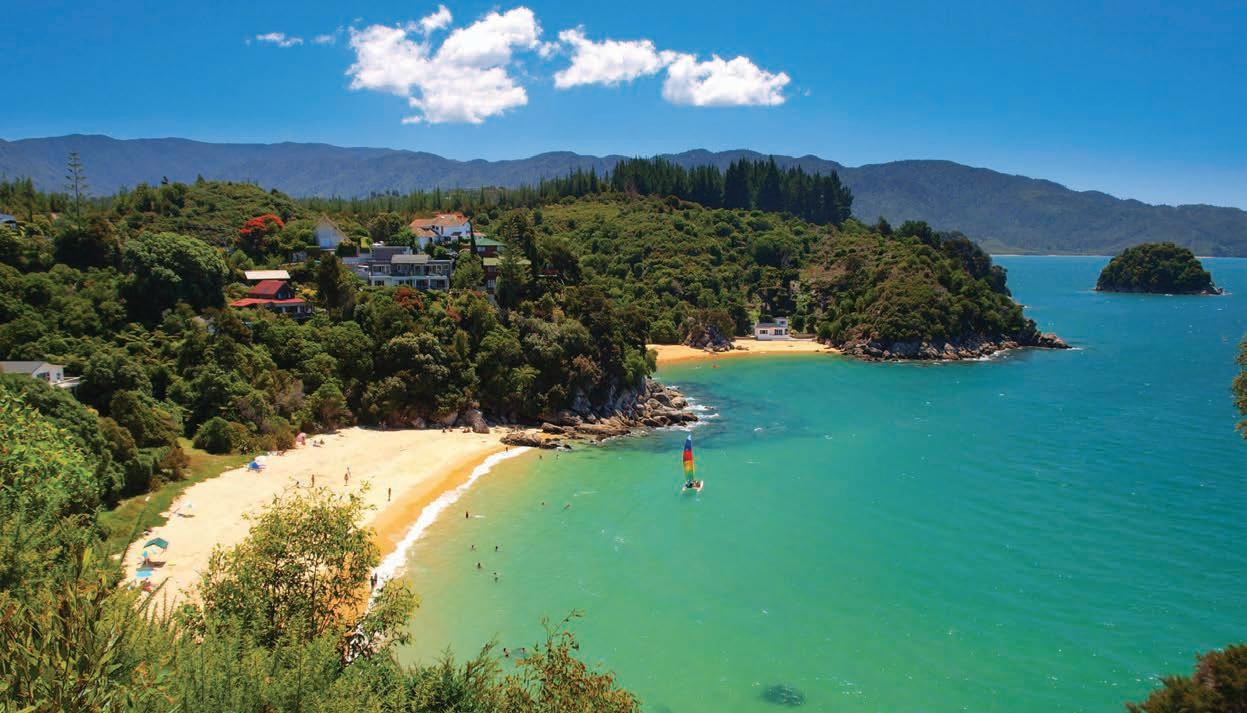
Whether you’re staying close to the central city or looking for a rural escape, beautiful, tranquil accommodation is plentiful in Nelson.
For a bit of luxury close to all the city amenities, book a suite at Pihopa Retreat. This historic boutique accommodation offers six luxury suites set in 2 hectares of park-like grounds. Each spacious suite has its own kitchenette, lounge area and sunny balcony for the ultimate in private relaxation. Guests can use the heated swimming pool or hire bikes to explore the local area.
For a real inner-city stay, try the high-end Oak Tree House. You’ll enjoy a two-bedroom home to yourselves, with a full kitchen, spacious lounge and outdoor dining area all decorated to a very
high contemporary standard. With a free car park and secure entry, Oak Tree House is ideal for visitors looking for an easy, handy location within walking distance to central Nelson.
Weekends were made for leisurely breakfasts at Melrose Café. Situated in the historical Melrose House, this eatery is known for its delicious sweet treats, but also has a robust breakfast menu. Request a table on the veranda so you can soak up the lush surrounds while you enjoy locally sourced ingredients and excellent coffee. Afterwards, fill your morning with a wander around the heritage listed house and surrounding rose and native gardens.
Make lunch an adventure with a trip out to Seifried Estate Winery. Enjoy a hosted wine tasting at the cellar door, followed by a delicious lunch at the on-site Harvest Kitchen. Nelson’s oldest family-owned winery is just a 15-minute drive from central Nelson and is known for its wide range of award-winning wines. Take a seat at one of Harvest Kitchen’s idyllic outdoor tables to soak up the sun while you choose from the menu of locally sourced, freshly made lunch dishes. What a way to while away the day!
The Boat Shed Café is something of a Nelson institution and should not be overlooked for a memorable evening dining experience. Jutting out spectacularly into Tasman Bay, it promises the ultimate in coastal atmosphere. Watch the sun go down over the water as you dine on sustainably caught seafood and sip local wines. It doesn’t get much better than this.
One of Nelson’s top attractions is the Centre of New Zealand. A short, pleasant (but relatively steep) hill climb will bring you to the geographic centre of the country, complete with information panels and plenty of seating for a well-deserved rest. Don’t forget your camera: the stunning backdrop across Nelson city and out to the Pacific Ocean makes for an excellent photo opportunity.
If you’re lucky enough to visit Nelson at the weekend, Nelson Market is a must-visit. In operation for more than 40 years, this bustling market is well known for its quality wares, which include everything from fashion, jewellery and local art to plants, food and healthcare. You can easily spend hours at this wonderful community event, enjoying the sights, sounds, scents and stalls. It is centrally located in Montgomery
Square and is held every Saturday from 8am to 1pm.
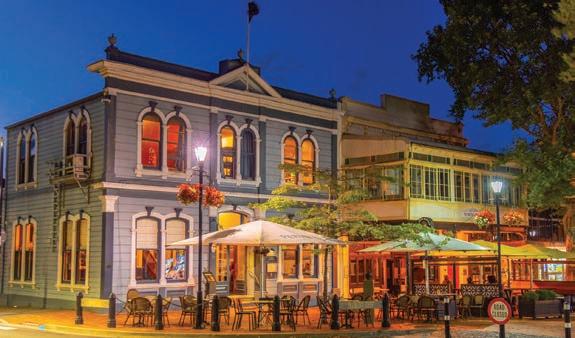
Nelson is known for its creative community, and the city is home to many an artistic attraction. Start your exploration with a visit to the Suter Art Gallery, home to an ever-changing array of exhibitions. A drive out to the famous Höglund Art Glass Studio in Appleby is worthwhile to see the incredible process of glass-blowing. You can also purchase beautiful glass pieces for your home from the gallery. A visit to Founders Heritage Park includes access to local artisans showcasing their processes and wares, and you can wander through the historical buildings and displays here. Top the day off with a musical performance at the Nelson Centre of Musical Arts.
Region: Tasman District


Airport: Nelson Airportt

Main road: Trafalgar Street
Population: 52,900
As the year ends and we socialise with family and friends over summer and the festive season, it can feel awkward visiting a person with dementia. While a person with dementia may struggle to follow a group conversation, always remember that they can still sense the happiness and festivity of the occasion. Below are some tips to help make the season as fun and stress-free as possible for everyone involved.
• Take something to share and ask in advance if there are any tasks you can do, such as picking up supplies on the way or posting cards. Alternatively, offer to sit with or entertain the person with dementia, or go for a walk with them, so that their care partner can get on with preparations.
• Christmas and holiday times can be stressful for care partners. Expectations tend to roll over from year to year, so now is a good time to reset those expectations and signal to family and friends what would work best for the person with dementia and their care partner. Allocate preparation and clearing-up tasks so the care partner is not left to do everything.
• If the diagnosis is new, speak with family, whānau and friends about how things may need to change this year. Consider what aspects of social gatherings are important for the person who has dementia. When and where would be least stressful for the family to get together? Consider holding several smaller gatherings if you think the person may become overwhelmed.
• The person with dementia can be encouraged to help with preparations alongside a family member, such as folding serviettes, sweeping paths, arranging flowers or preparing vegetables. This creates a special time to connect one to one without adding to the festive stress.
• Ahead of the day, ask family and friends for some ideas for activities they may like to do with the
person with dementia. These could include taking a walk, having a look around the garden, listening to some music and looking through photos together. These activities encourage reminiscing, although try to avoid asking “Do you remember…?” and instead start the conversation with “I was thinking about the time we…”. If the person doesn’t remember, it doesn’t matter – you can still share the pleasurable memory with them as a new story. This will allow the care partner to engage with other family and friends, or to take a walk or rest on their own.
• Explain to family and friends that the person with dementia may not remember them. Ask them to introduce themselves and give context to the relationship, such as “Hello Aunty Gwynneth, I’m Christine, your niece. How are you feeling today?” If you are a friend of a person with dementia, don’t worry if they don’t remember you and instead be the person they think you are – this may be your father or another friend.
• If you worked or socialised with the person in the past, talk about those times you shared, the cars you drove and the places you went to. It doesn’t matter if their memories are different. Ask them to tell you more about their story.
• Seat the person with dementia at the head of the table to eat so they are not surrounded by large numbers of people talking.
• Avoid offering too much alcohol to the person with dementia, and instead serve low-alcohol drinks or alternate alcoholic and non-alcoholic drinks. This will help reduce the risk of falls. Also be aware of toys lying around that may present trip hazards.
• Plan some quiet time during the day to allow the person with dementia and their care partner to rest up, especially if there will be more than one social gathering in a day.
The queen has died And I’m sad inside We never managed to get her on side For seventy years she ruled over us But those silly dogs received all the fuss Corgi by name They grabbed all the fame So many photos with them in the frame. Not only were we so long overlooked But now we’re all hassled Our freedom forsook We’ll be as mice in a cage No longer the rage Restricted all times from an early age. The cats meowed, howled and hissed As they joined the complaint Till a neutered Tom said, we’ll not be missed. We’ll be pampered and cared for With outdoor space too We need not make such a shocking to-do. A Persian spat from her furry face It’s still not right We’re a royal breed We shouldn’t be banished That we don’t need.
With no more roaming around at night People will get a real fright The mice and rats will have their way They are the pests, not us, I say.

Oh stop complaining, another said It simply shows that you’re not well bred Think of the times That we’ve been honoured in poems, on stage Competitions and song I think you’ve really got things wrong. A spiny, thin cat Then raised her voice I think you forget We once had a choice My grandaddy talked to me one day How his wife went missing She went far away. Oh pussy, he’d said When she came trailing back Where have you been I’ve been up to London to visit the queen So we do have a memory of that special time When cats met with royalty But not only that They showed off the skills That belong to a cat Pussy cat, pussy cat, what did you there I frightened a little mouse Under her chair
The time has arrived when we must sing A cat may look at a king.
Irene Swadling Summerset at AoteaPreviously a long-time Wellington resident, Marjorie Hall has lived in a villa at Summerset by the Ranges in Levin for five years. Now aged 100, she enjoys the title of Summerset by the Ranges’ oldest resident.
What is the most adventurous thing you have done?
I would say moving to New Zealand, which is about as far away from where I was born as you can get.
I grew up as an only child in Wallasey near Liverpool in England. My husband, my young son Robert and I emigrated in 1960. We settled in Wellington. Funnily enough, the street I live on in the village here is called Liverpool Street. I’ve come full circle!
What is your ideal way to spend a weekend?
To have some good company and go out for a good lunch! My son Robert still lives in Wellington, and he visits me once a week. I’m retired, so do Mondays count as the weekend? I regularly attend the Monday Morning Tea here; I enjoy the walk to and from the village centre.
What advice would you give to your 25-year-old self?
I’m 100 years old, the first in my family to become a centenarian. I even got a card from the Queen! I credit my age to good genes on my father’s side. So, I think I would tell 25-year-old me to slow down and get more knowledge about the things I was
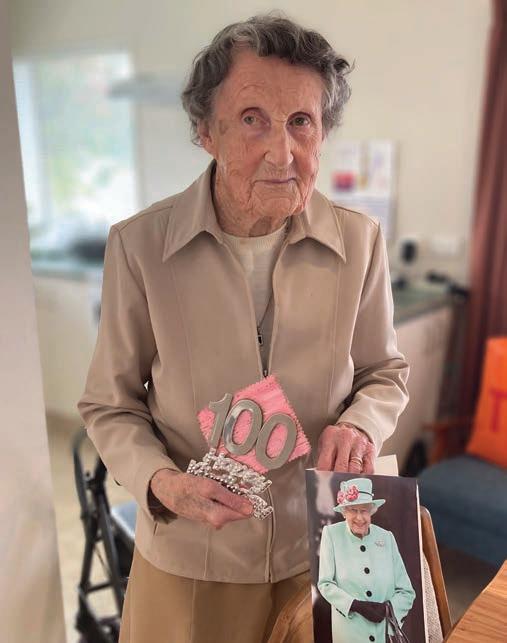
interested in learning, because there’s plenty of time. I am a jack of all trades, master of none. I like to do a bit of everything!
What is your favourite recipe and why?
My son was here when I was asked this. I would suggest something different, but he would say my speciality is to get a slice of bread, cook it, then scrap it because I burnt it. That’s the problem with children – they can give away your culinary secrets! My burnt toast is why I enjoy going out for lunch! Summerset deliver a lot of my meals now, thankfully.
Where would you most like to travel to and why?
Oh, I have been so fortunate on the travel front. My husband and I loved to travel the world together. We went back to England three times, and we have been to Canada to visit family and explore. I managed to track down a long-lost cousin who lives in Australia, so I have visited them there. One place I would love to go is Vienna, as I am a huge fan of Strauss’s music. He was a composer, conductor, violinist and pianist – an incredibly talented man.
Over the past decade we’ve discovered a lot about the human brain and its ability to learn new things. This is commonly referred to as neuroplasticity. In fact, the biggest unofficial study we have collectively carried out was living through the Covid-19 pandemic. Almost every week we were forced to adapt our habits, daily routines and lifestyles to accommodate the changing situation across the world. And this is still happening today. We all had to adjust, regardless of age, location, job or lifestyle.
Interesting things happened. We heard that whales returned to harbours that were previously busy with shipping, roads became walkways, people living in parts of India were able to see the Himalayas for the first time in decades as air pollution cleared, and, due to the rise in home baking, the United States almost ran out of yeast!
This worldwide ‘experiment’ showed that no matter what age we are, we can learn new things and (hopefully!) be better for it.
This is the fascinating thing about the human brain: it is never sitting idle. It is continually helping us to try to make sense of our surroundings. This means that it is never too late to take up a new skill, sport or hobby. You may not have the sponge-like brain of a newborn, but what you do have is wisdom and life experience. You really can decide to take up hiking, learn how to play golf or play tennis at any age.
This worldwide ‘experiment’ showed that no matter what age we are, we can learn new things and (hopefully!) be better for it.

There is also that marvellous stage of learning something new called the beginner’s curve. This is when, in the early stages of picking up a new skill, we achieve rapid and consistent improvement. We’ve all experienced this in some way, whether it’s when learning to play a musical instrument, throw a ball or draw a picture. After only a few hours of practice, our skills have developed in leaps and bounds.
As the weather begins to become fine and we head into what is looking to be a classic warm Kiwi summer, there are infinite opportunities to get active and exercise your brain and body. So, what are you going to do with your body today? Book an activity, call a friend or just get out and do something you’ve never tried or haven’t done in years.
It’s never too late to start – and oddly enough, the only thing stopping you is that fantastic brain of yours!


For Oscar of Summerset at Monterey Park, 7.30am is prime time. That’s when he heads off for his usual 8km walk around Hobsonville Point. “We usually end up at the jetty,” says owner Graeme Sanderson. “There’s a nice coffee shop, Fabric, opposite the ferry wharf. Honestly, I have spent hundreds on coffees on our dog walks!”
Oscar is a Cavoodle — half Cavalier King Charles Spaniel and half Miniature Poodle, and came into Graeme’s life 13 years ago as a gift from his daughter Catherine. “I had had some ill health, and a brain AVM [arteriovenous malformation] caused a stroke. It meant that I had to re-learn how to walk. Catherine knew a dog would be a motivator for me to get out and practise.”
At eight weeks old, Oscar was flown up to Auckland from the breeder in Taupō. “We struggled with the fact that Oscar treated the carpet like it was his toilet. Catherine also has a dog, and she took him for six weeks and trained him. That solved the carpet problem!”
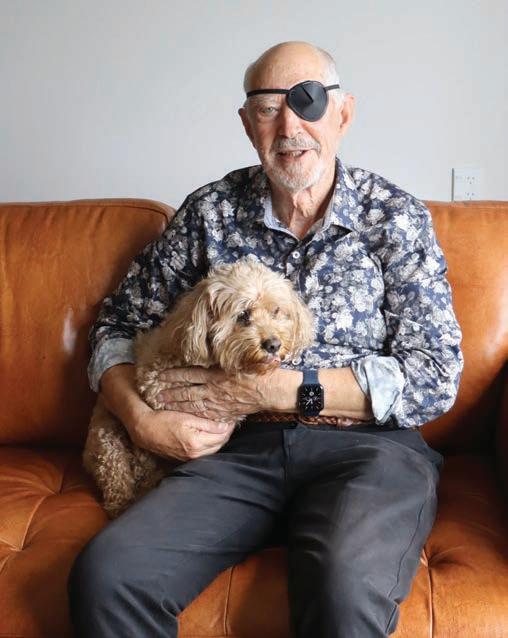
Oscar is groomed at the dog parlour every six weeks, and his gorgeous fluffy coat means he has more than a passing Ursus resemblance.
“I call him Oscar-bear, as he really looks like a teddy bear,” says Graeme. Oscar has the placid
personality of a teddy bear too, and his calm nature means he is popular with the other village residents who often join him and Graeme on his walks.
“One of the great things about living in the village is the friendships I have made. A group of us usually walk together,” says Graeme. “Oscar is very friendly with most people. He is not much of a barker and is very quiet and patient. As he has become older, he has become grumpier with some other dogs, but with people he is normally affectionate.”
Oscar’s affection doesn’t stretch to his worming tablet, which he resolutely refuses to eat, despite Graeme’s best efforts at disguising it in his food. “He just refuses, so a trick I have learnt is to put it in his throat, hold his muzzle shut and then blow on his nose. It triggers swallowing.”
Worm tablets aside, Oscar unfortunately had to get used to being monitored for his health, as he tore his anterior cruciate ligament, not once, but twice. “He jumped and snapped it, then 18 months later he did it again to the other leg. He also got kennel cough when it was rife in the wider area. I call him the Million Dollar Dog because of the vet bills!” Despite this, Graeme wouldn’t be without his four-legged friend. “It’s a two-way street. We look after each other.”
Summerset Mount Denby 7 Par Lane, Tikipunga, Whangārei 0112 Phone (09) 470 0282
Summerset Falls 31 Mansel Drive, Warkworth 0910 Phone (09) 425 1200
Summerset at Monterey Park 1 Squadron Drive, Hobsonville, Auckland 0618 Phone (09) 951 8920
Summerset at Heritage Park 8 Harrison Road, Ellerslie, Auckland 1060 Phone (09) 950 7960
Summerset by the Park 7 Flat Bush School Road, Manukau 2019 Phone (09) 272 3950
Summerset at Karaka 49 Pararekau Road, Karaka 2580 Phone (09) 951 8900
Summerset St Johns 188 St Johns Road, St Johns 1072 Phone (09) 950 7980
Summerset Parnell* 23 Cheshire Street, Parnell 1052 Phone (09) 950 8212
Summerset Half Moon Bay* 25 Thurston Place, Half Moon Bay, Auckland 2012 Phone (09) 306 1422
Summerset Milldale* Argent Lane, Milldale, Wainui 0992 Phone 0800 786 637
Summerset down the Lane 206 Dixon Road, Hamilton 3206 Phone (07) 843 0157
Summerset Rototuna 39 Kimbrae Drive, Rototuna North 3210 Phone (07) 981 7820
Summerset by the Lake 2 Wharewaka Road, Wharewaka, Taupō 3330 Phone (07) 376 9470
Summerset Rotorua* 171–193 Fairy Springs Road Rotorua 3010 Phone (07) 343 5132
Summerset Cambridge 1 Mary Ann Drive, Cambridge 3493 Phone (07) 839 9482
Summerset by the Sea 181 Park Road, Katikati 3129 Phone (07) 985 6890
Summerset by the Dunes 35 Manawa Road, Papamoa Beach, Tauranga 3118 Phone (07) 542 9082
HAWKE’S BAY
Summerset in the Bay 79 Merlot Drive, Greenmeadows, Napier 4112 Phone (06) 845 2840
Summerset in the Orchard 1228 Ada Street, Parkvale, Hastings 4122 Phone (06) 974 1310
Summerset Palms 136 Eriksen Road, Te Awa, Napier 4110 Phone (06) 833 5850
Summerset in the Vines 249 Te Mata Road, Havelock North 4130 Phone (06) 877 1185
Summerset Mountain View 35 Fernbrook Drive, Vogeltown, New Plymouth 4310 Phone (06) 824 8900
Summerset at Pohutukawa Place 70 Pohutukawa Place, Bell Block, New Plymouth 4371 Phone (06) 824 8530
Summerset in the River City 40 Burton Avenue, Whanganui 4500 Phone (06) 343 3133
Summerset on Summerhill 180 Ruapehu Drive, Fitzherbert, Palmerston North 4410 Phone (06) 354 4964
Summerset Kelvin Grove* Stoney Creek Road, Kelvin Grove, Palmerston North 4470 Phone (06) 825 6530
Summerset by the Ranges 104 Liverpool Street, Levin 5510 Phone (06) 367 0337
Summerset on the Coast 104 Realm Drive, Paraparaumu 5032 Phone (04) 298 3540
Summerset on the Landing
1–3 Bluff Road, Kenepuru, Porirua 5022 Phone (04) 230 6722
Summerset at Aotea 15 Aotea Drive, Aotea, Porirua 5024 Phone (04) 235 0011
Summerset at the Course 20 Racecourse Road, Trentham, Upper Hutt 5018 Phone (04) 527 2980
Summerset Waikanae 28 Park Avenue, Waikanae 5036 Phone (04) 293 0002
Summerset Boulcott 1A Boulcott Street, Lower Hutt 5010 Phone (04) 568 1442
Summerset Masterton* Lansdowne, Masterton 5871 Phone (06) 370 1792
Summerset in the Sun 16 Sargeson Street, Stoke, Nelson 7011 Phone (03) 538 0000
Summerset Richmond Ranges 1 Hill Street North, Richmond 7020 Phone (03) 744 3432
Summerset Blenheim* 183 Old Renwick Road, Blenheim 7272 Phone (03) 520 6042
CANTERBURY
Summerset at Wigram 135 Awatea Road, Wigram, Christchurch 8025 Phone (03) 741 0870
Summerset at Avonhead 120 Hawthornden Road, Avonhead, Christchurch 8042 Phone (03) 357 3202
Summerset on Cavendish 147 Cavendish Road, Casebrook, Christchurch 8051 Phone (03) 741 3340
Summerset Rangiora* 141 South Belt, Waimakariri, Rangiora 7400 Phone (03) 364 1312
Summerset Prebbleton 578 Springs Road, Prebbleton 7604 Phone (03) 353 6312
OTAGO
Summerset at Bishopscourt 36 Shetland Street, Wakari, Dunedin 9010 Phone (03) 950 3102